The Amazfit GTS 4 convinces with display, workmanship, setting options and battery life. The accuracy of the vital data has also been significantly improved in some cases. But the smartwatch still lacks broad app support from third-party developers to compete with Wear OS.
Table of Contents
- The Amazfit GTS 4 in detail
- 1.75-inch AMOLED display
- Protective glass and SoC not mentioned
- Up to 7 days of battery life, in practice 4
- Charging via pins
- Internal memory, speaker, microphone and Bluetooth
- No mobile payment
< li>New sensor for better health tracking
- No temperature sensor and no blood pressure
- Route navigation and 6 location standards with updates
- Zepp app for setup and sync
- Heart rate and blood oxygen measurement
- The GTS 4 is often wrong with the steps
For the start of the IFA 2022 in Berlin, Amazfit has new smartwatches in its luggage. After the outdoor smartwatch T-Rex 2 (test), the fourth generations of the GTR and GTS series are now available. They offer improved sports functions, extended health tracking and, like the outdoor model, GPS for determining your position without a smartphone with route import.
The GTS 4 is the rectangular variant of the smartwatch, while the GTR is round. Their technical data are largely identical, but due to the different design, they differ in weight and battery size, which in turn affects the battery life. In the test, the lighter, rectangular model comes into play, which is 42.7 × 36.5 × 9.9 mm in size and weighs 27 g without the bracelet. The GTR 4 measures 46 × 46 × 10.6mm and weighs 34g without the strap. The battery in the GTS 4 has a capacity of 300 mAh, in the GTR 4 it is 475 mAh.
There are also differences in price. The recommended retail price for the Amazfit GTS 4 is 199.90 euros. It can already be purchased from Amazon* and is available in the colors Infinite Black, Misty White, Autumn Brown and Rosebud Pink. The Amazfit GTR 4, on the other hand, costs 229.90 euros (RRP). It is also available from Amazon*. Color choices are Superspeed Black, Vintage Brown Leather, and Racetrack Gray. With the Amazfit GTS 4 Mini, a smaller model is also available for 99.99 euros*, which is not discussed in detail in the test.


Amazfit GTS 4
The Amazfit GTS 4 in detail
The case of the Amazfit GTS 4 is made of aluminum. With the stated dimensions of 42.7 × 36.5 × 9.9 mm and a weight of 27 g without the strap, the Amazfit GTS 4 is slightly smaller than the larger variant of the Apple Watch Series 8, which measures 45 × 38 × 10 .7 mm and a weight of 38.8 g. The Amazfit GTS 4 is also very comfortable to wear in everyday life, but not quite as inconspicuous and light as the small Samsung Galaxy Watch 5 (test), under whose bracelet you sweat a little less. The bracelet is 20 mm wide and can be quickly changed by the wearer at any time.
Amazfit does not name an IP certification for the GTS 4, but states a water resistance of up to 5 ATM – the T-Rex 2 is 10 ATM. When bathing, showering or washing your hands, the smartwatch can therefore be worn as well as normal swimming. If you want to dive deeper, you have to put it down. Because 5 ATM does not mean that the GTS 4 is waterproof to a depth of 50 m, but that it can withstand the pressure of a water column of 50 m. Depending on the movements, this pressure can be exceeded.
-
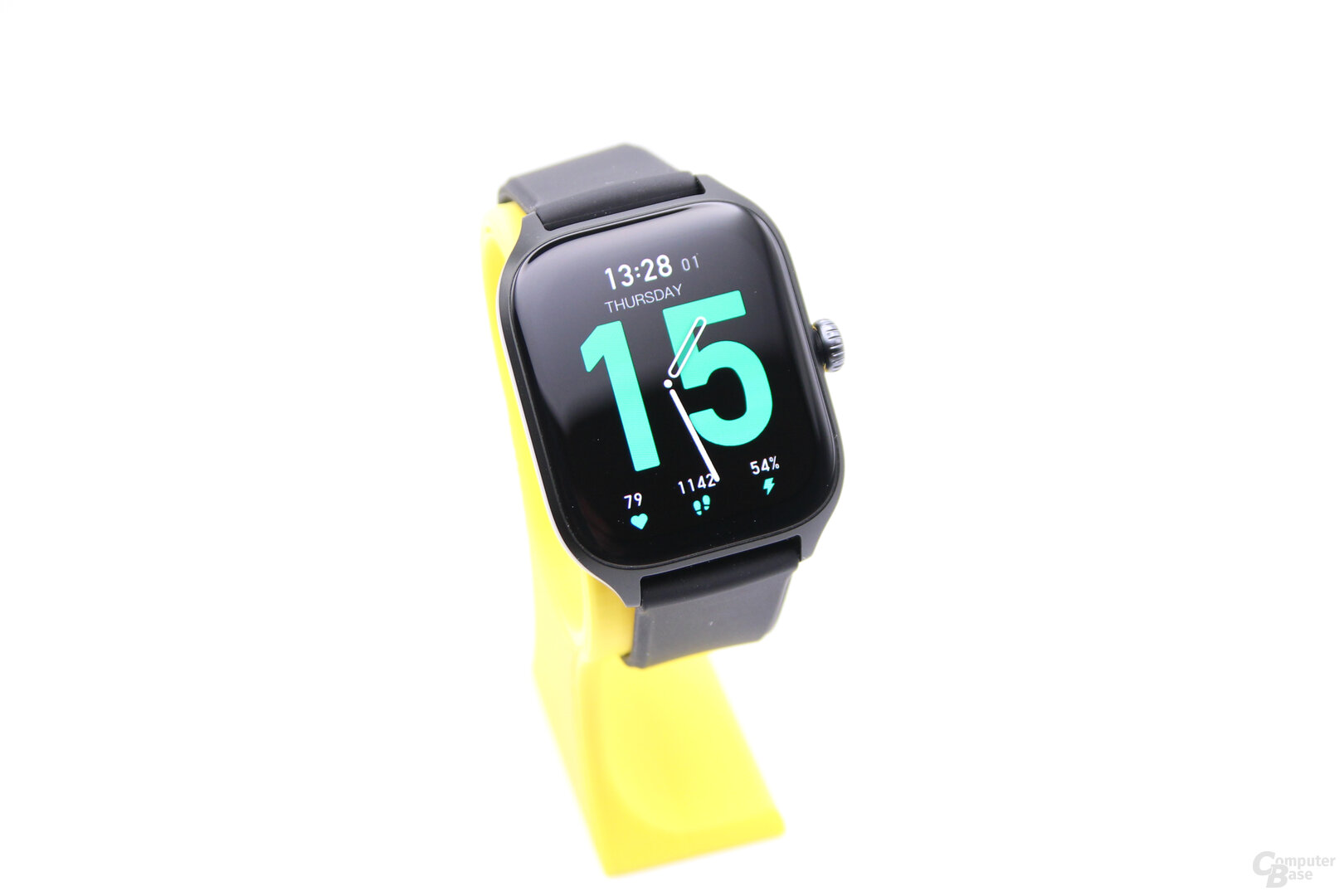 Amazfit GTS 4
Amazfit GTS 4
Image 1 of 3
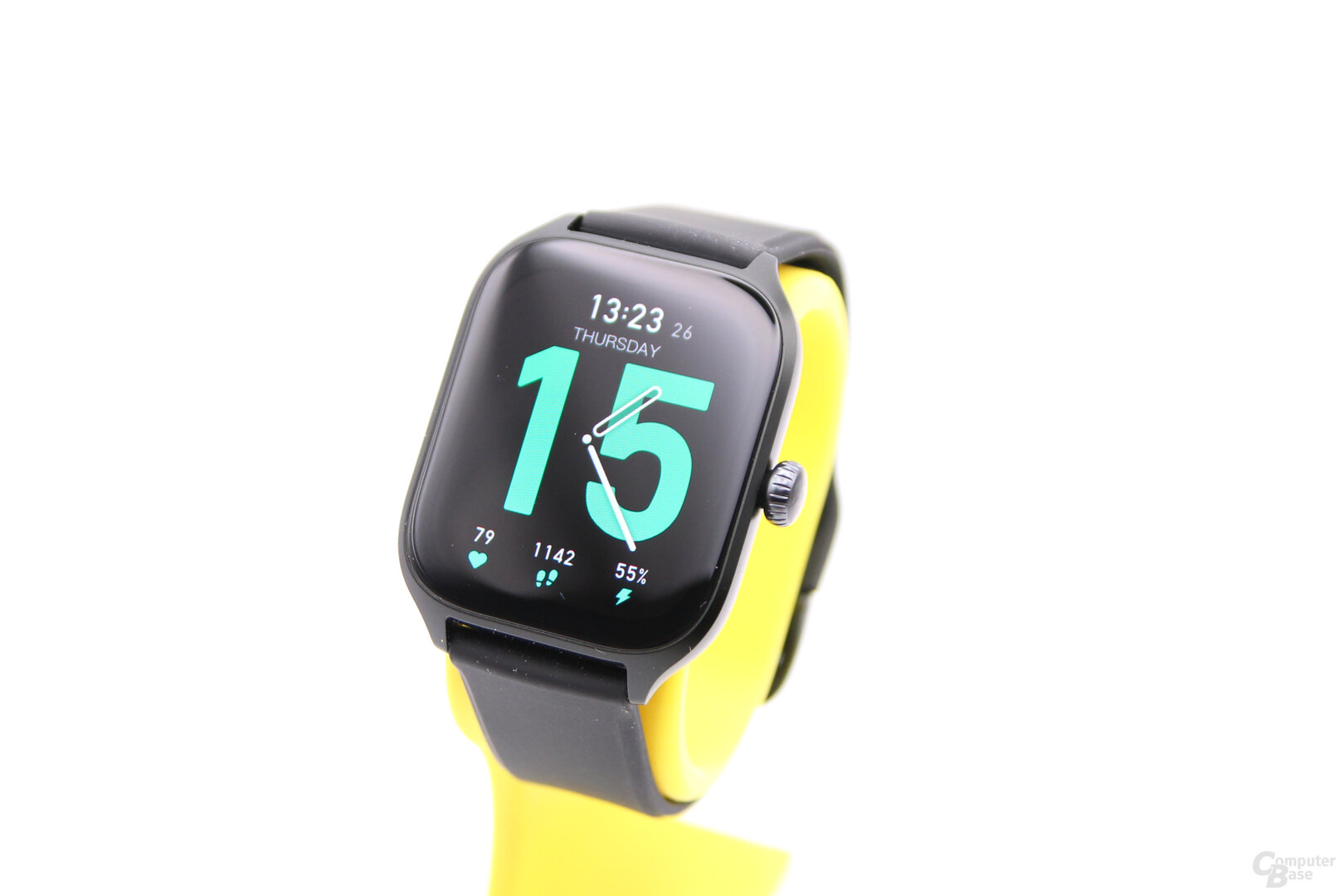
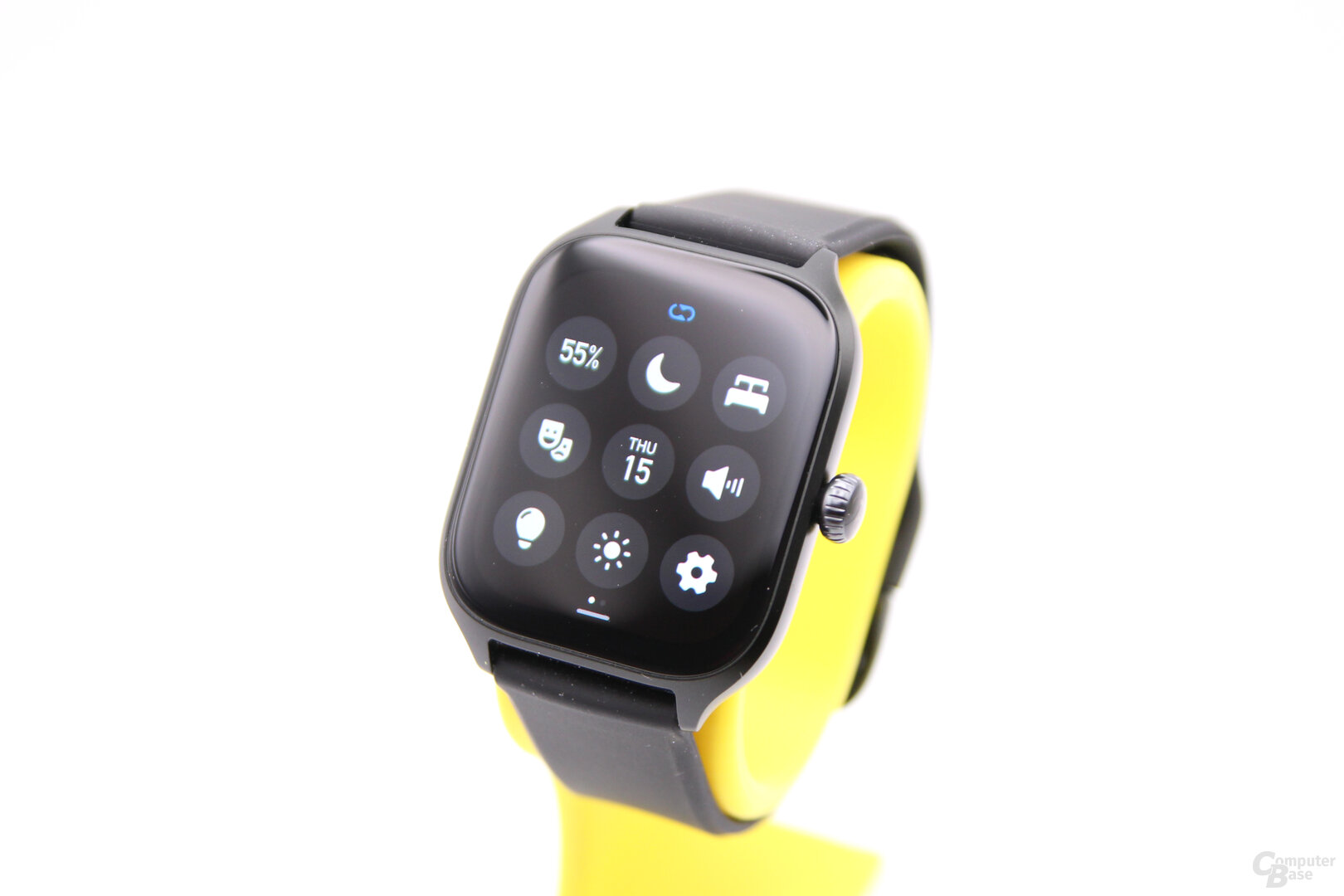
Amazfit GTS 4
1.75-inch AMOLED display
The GTS 4's 1.75-inch AMOLED display has a resolution of 390 × 450 pixels, which results in a pixel density of 341 ppi. The 45 mm model of the Apple Watch has a diagonal of 1.9 inches with 396 × 484 pixels. Amazfit specifies the brightness as 500 cd/m², which is surprising given the 1,000 cd/m² for the T-Rex 2, GTR 3 Pro, GTR 3 and GTS 3 and seems to be a wrong statement – especially since the display of the GTS 4 is too never gives the impression of being darker or too dark.
Protective glass and SoC not specified
With the protective glass, Amazfit is again covered and does not reveal whether a special glass is used. The company only speaks of tempered glass with an anti-fingerprint coating. The latter does a good job, but as with the T-Rex 2, the glass should not be among the hardest on the market. The manufacturer also keeps a low profile when it comes to the SoC used and does not name a specific model.
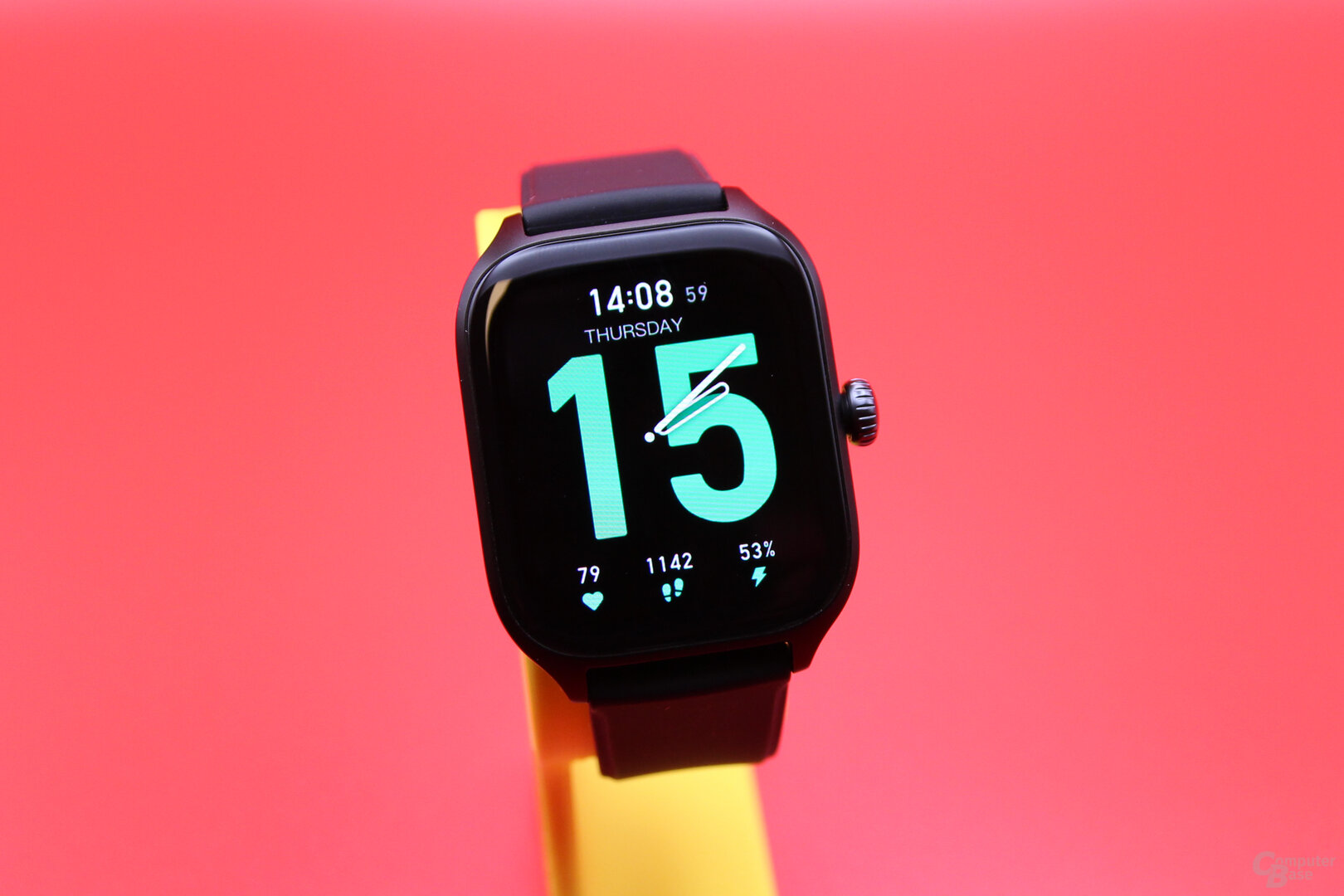 Amazfit GTS 4
Amazfit GTS 4Up to 7 days of battery life, in practice 4
The Amazfit GTS 4 is officially said to offer up to seven days of battery life, but this applies to a deactivated always-on display and reduced health data collection. In the test, a battery life of four days was achieved with average use with activated always-on display and complete recording of all vital data with occasionally activated GPS and two hours of music playback via the smartwatch, without active WLAN, because that has to be different with Amazfit than with most other manufacturers must first be activated manually and is switched off at the factory to save battery.
Load via pins
While the display of the GTS 4 is the same size as the GTS 3 and has the same number of pixels, the battery has grown from 250 to 300 mAh. Other changes are decisive, however, because the GTS 4 offers a number of other functions that the GTS 3 did not yet offer. It is charged via a magnetic holder with two contacts, so the GTS 4 still does not charge wirelessly. A power adapter is not part of the scope of delivery, so a USB-A power adapter is required. The charging port is not disoriented and magnetically docks to the GTS 4 in only one position. If the watch is not laid flat to charge, which is not the first choice given that the magnet is still a bit too weak, it is always on the side of the crown. The orientation should therefore have been implemented the other way round.

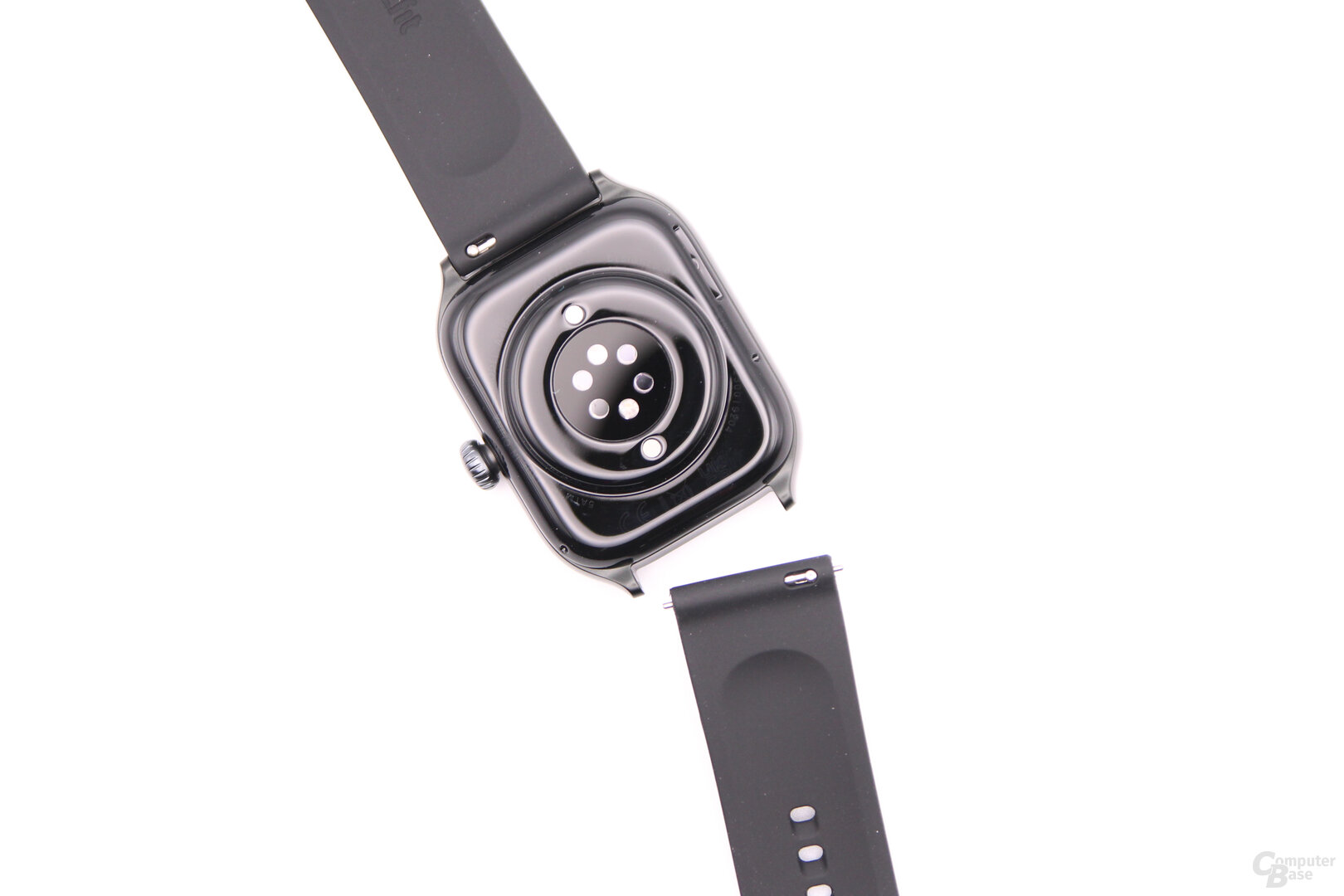
Amazfit GTS 4
Internal memory, Speakers, microphone and Bluetooth
It starts with functions that Amazfit had previously reserved for a Pro model. Integrated WLAN, a loudspeaker in the smartwatch, Bluetooth telephony and an internal memory that can be used to store music, for example, are now also available in the GTS 4. As with the Amazfit GTR 3 Pro, the user can access 2, 3 GB of internal memory to play music directly on Bluetooth headphones independently of the smartphone. In sports mode, real-time data such as heart rate, training duration and distance or drinking reminders can be output via the loudspeaker, which sounds sideways at the bottom left. This is also possible via Bluetooth to headphones instead of via the loudspeaker.
Telephone calls can also be made via the watch, since a microphone is installed in addition to the loudspeaker. None of this is possible with the GTR 3, GTS 3 and T-Rex 2. In addition to Bluetooth 5.0, the watch also has a direct WiFi connection with 2.4 GHz.
-
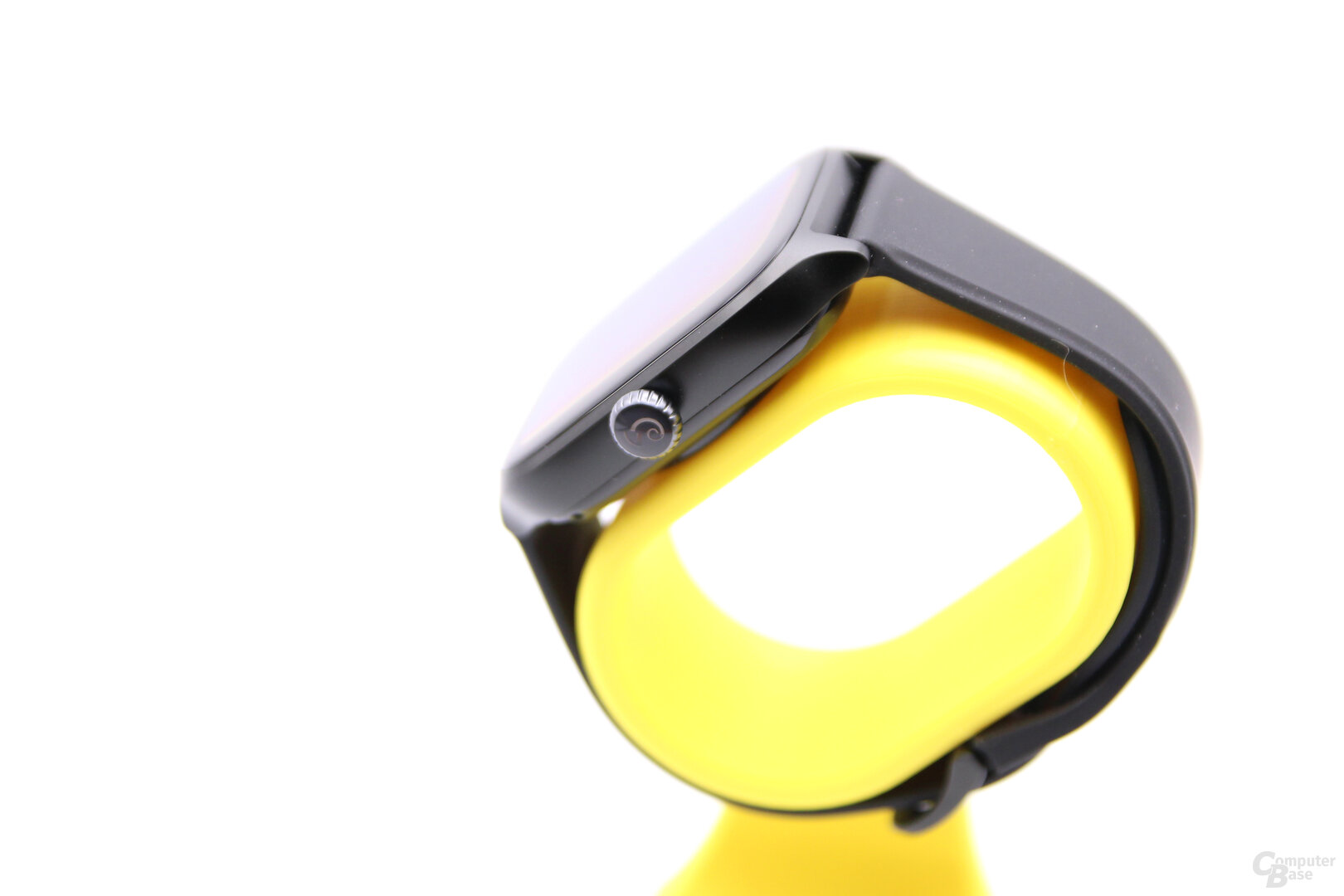 Amazfit GTS 4
Amazfit GTS 4
Image 1 of 2
 Amazfit GTS 4< /figure>
Amazfit GTS 4< /figure> No mobile payment
Due to the lack of NFC, however, none of the new watches can be used to pay on the go – as was the case with the predecessors. Google services are currently not supported anyway, and there are currently no apps available for the Amazfit smartwatches from other providers who offer a mobile payment system.
New sensor for better health tracking
Also new compared to its predecessor and also to the T-Rex 2 is the sensor for vital data. While predecessors and T-Rex 2 still use the BioTracker 3.0, the GTS 4 now uses the optical BioTracker 4.0 PPG. Thanks to the second LED in addition to the four photodiodes, the sensor is said to collect 33 percent more data than its predecessor. In addition, Amazfit has improved the algorithm for detecting the heart rate, so that signal interference from arm movements during exercise should be greatly reduced. The heart rate measurement should come even closer to the actual value. Unlike the GTR 3 Pro, the GTS 4 does not have a temperature sensor. It also lacks an ECG function – rumor has it that it will be activated later, but this is not official. The extent to which the recording of vital data has improved is examined in more detail below.
-
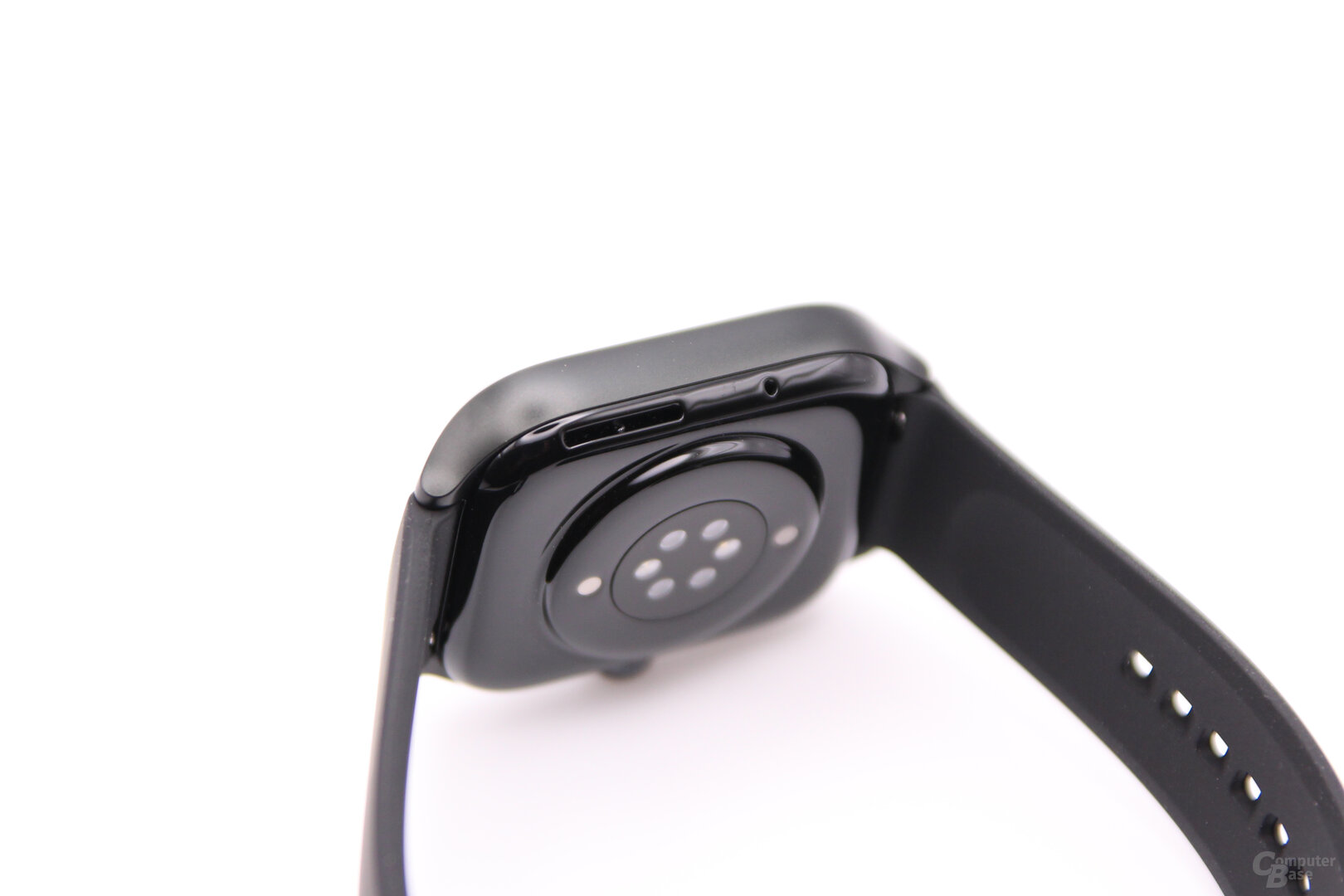 Amazfit GTS 4
Amazfit GTS 4
Image 1 of 2
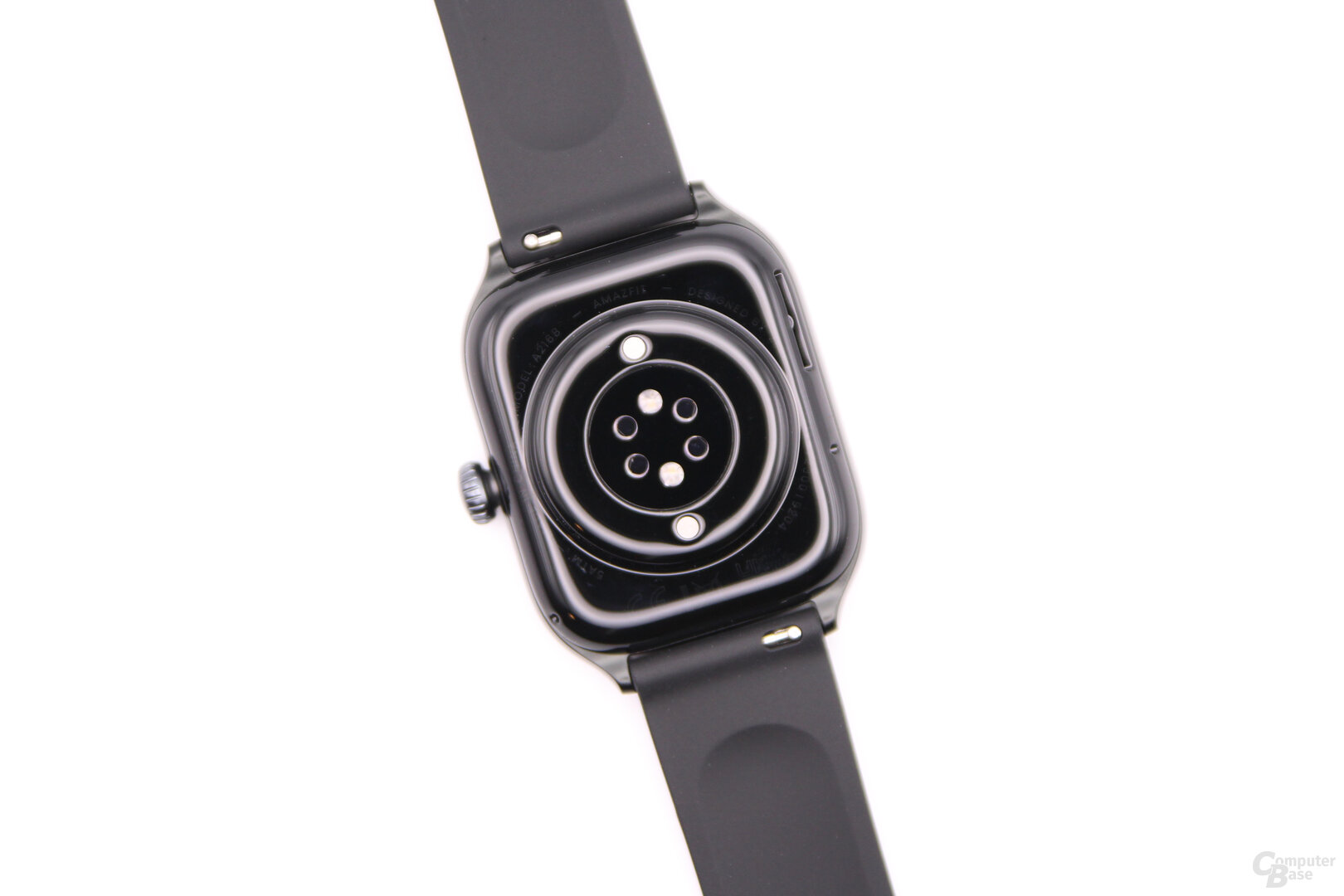 Amazfit GTS 4< /figure>
Amazfit GTS 4< /figure> However, the type of data recorded has not changed with the new sensor. As usual, heart rate, blood oxygen saturation and stress levels can be monitored 24/7. With the well-known one-tap measurement function, these three readings and the respiratory rate can also be queried in 45 seconds as required. It is also possible to have each value determined individually. In addition to this data, the GTS 4 also records the steps taken by the user – more on that later. An acceleration sensor, a compass, a gyroscope, an ambient light sensor and a barometer are installed as sensors in the GTS 4.
The sleep analysis should also be more precise with the new models and users can now create their own sleep schedule according to their sleeping habits, which the device uses to detect sleep. In this way, shift and night workers can also correctly record sleep during the day.
-
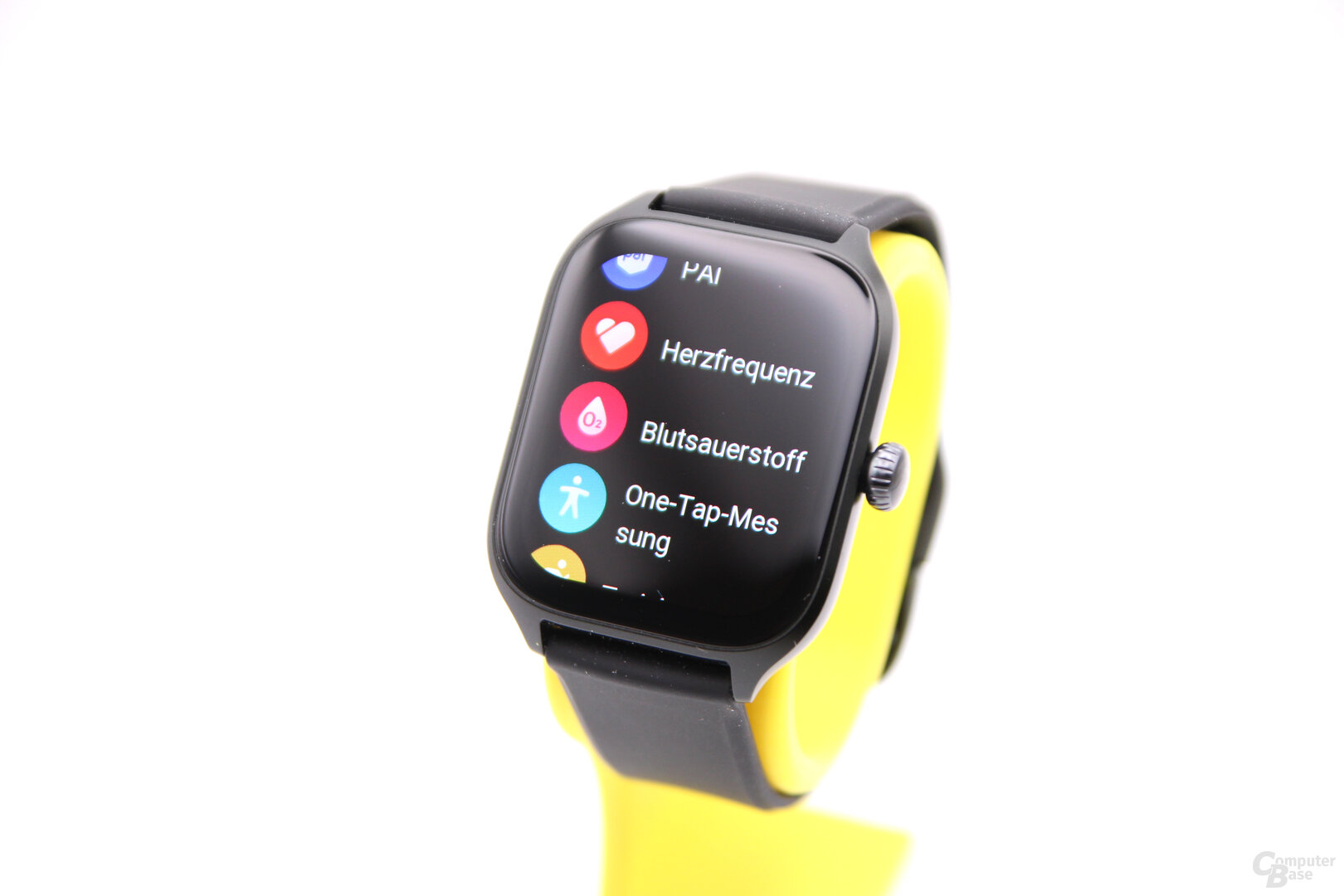 Amazfit GTS 4
Amazfit GTS 4
image 1 of 11
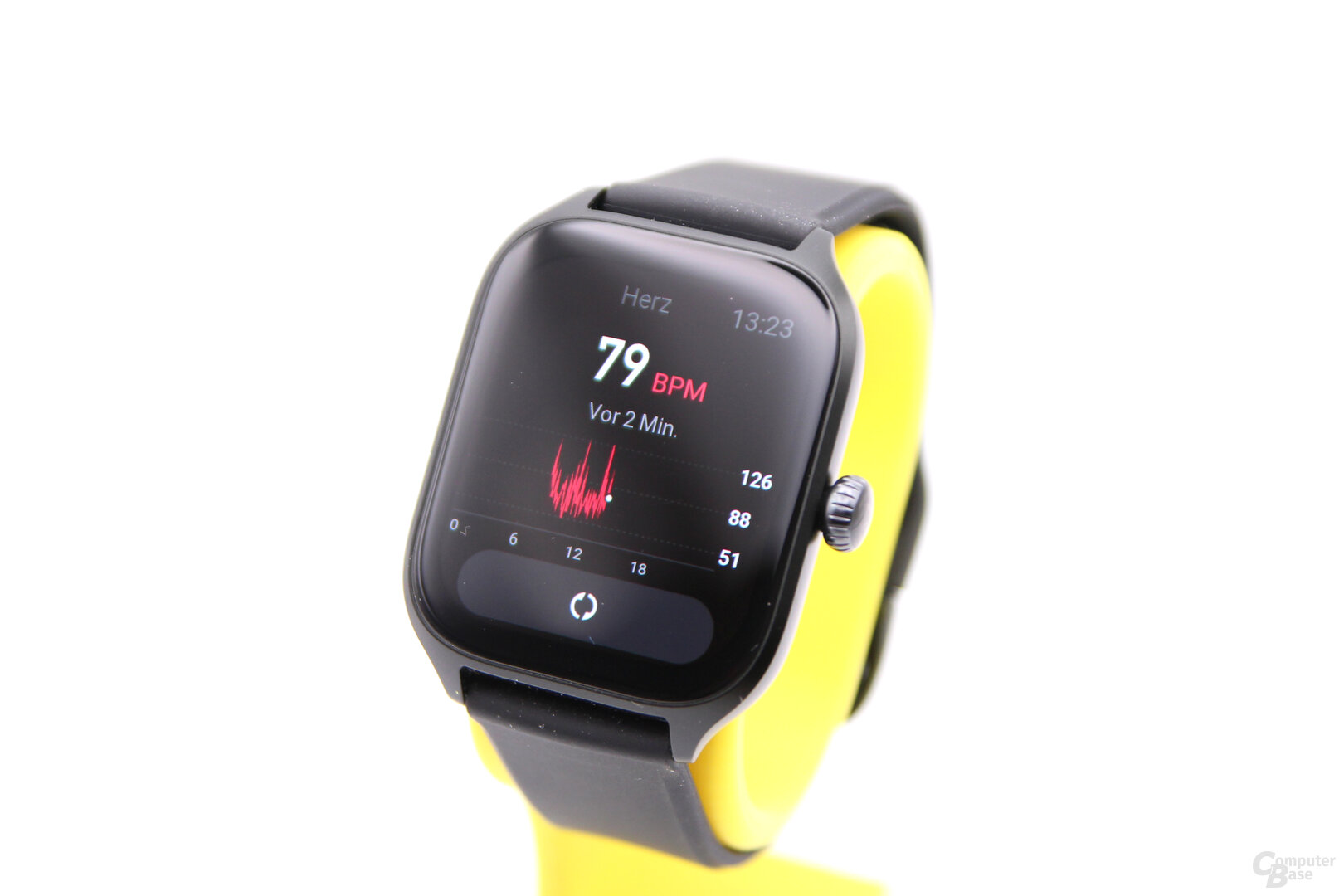

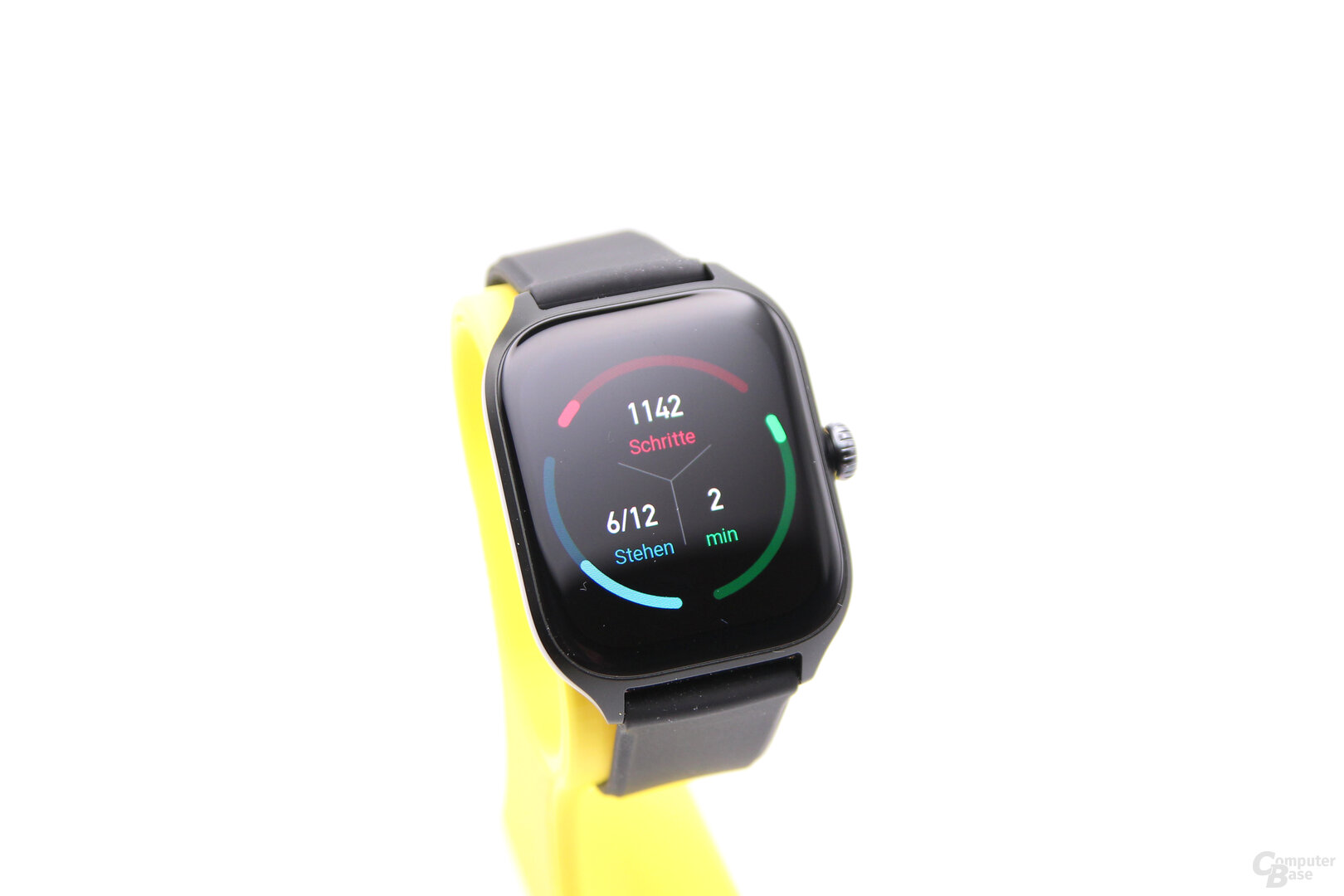
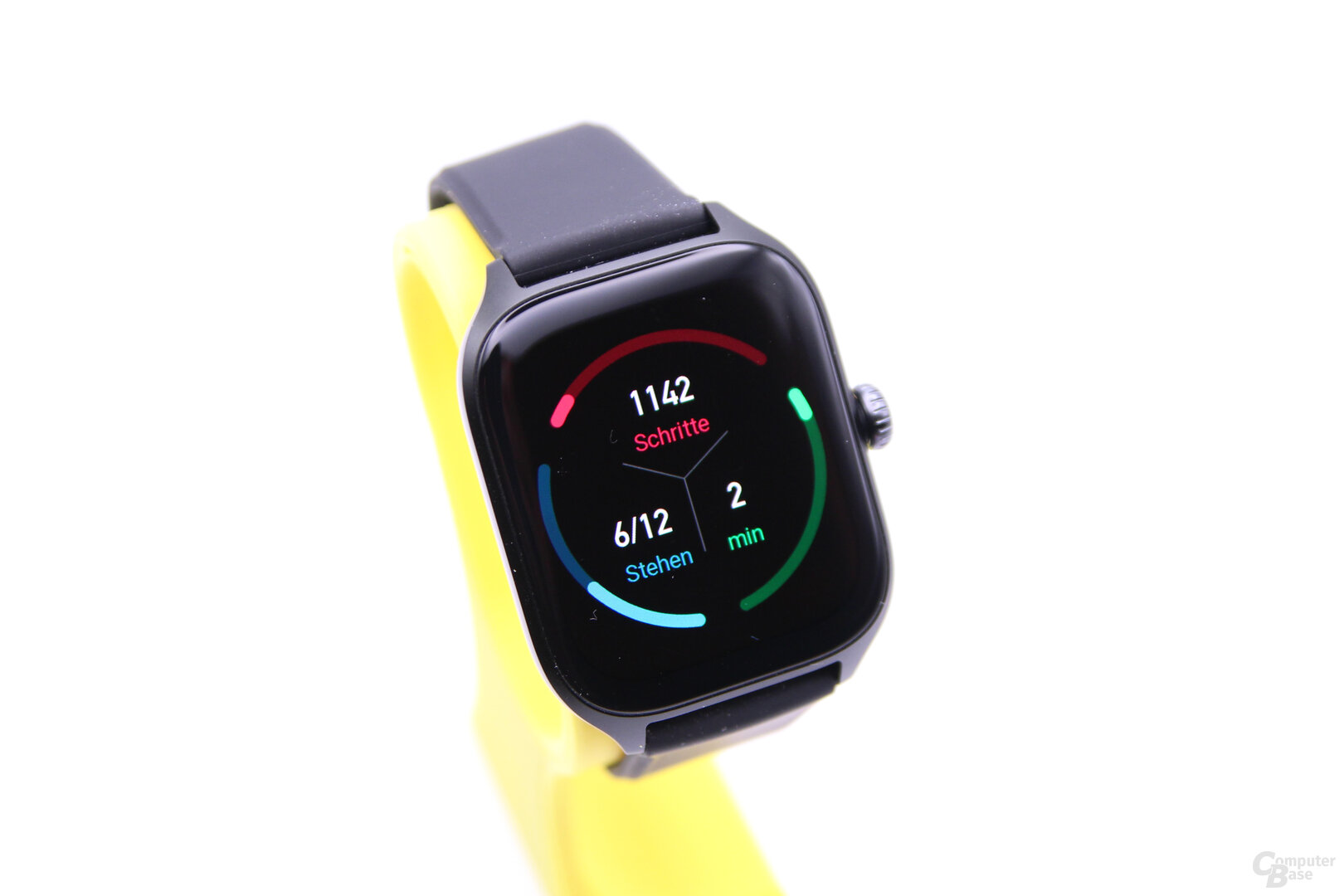

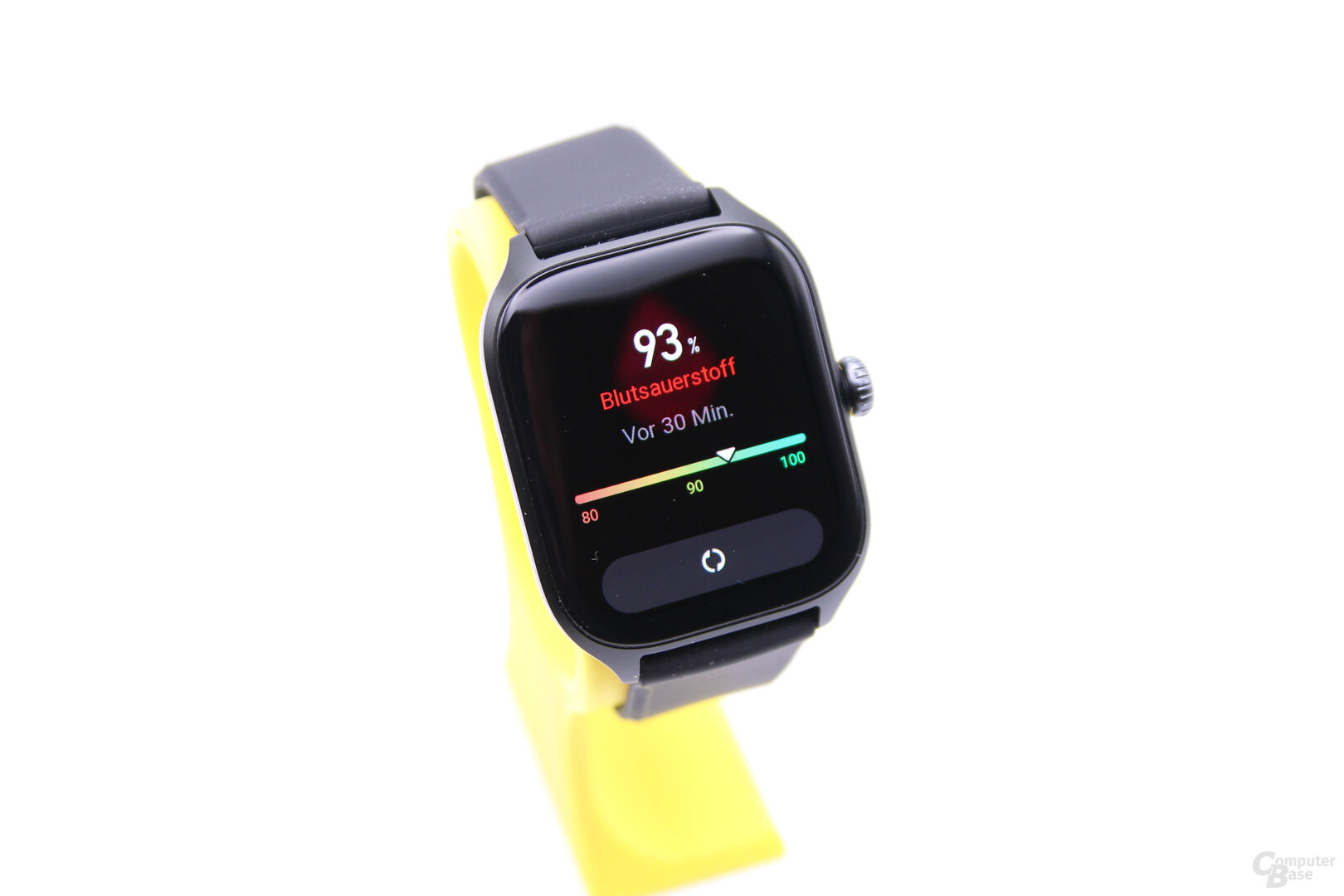
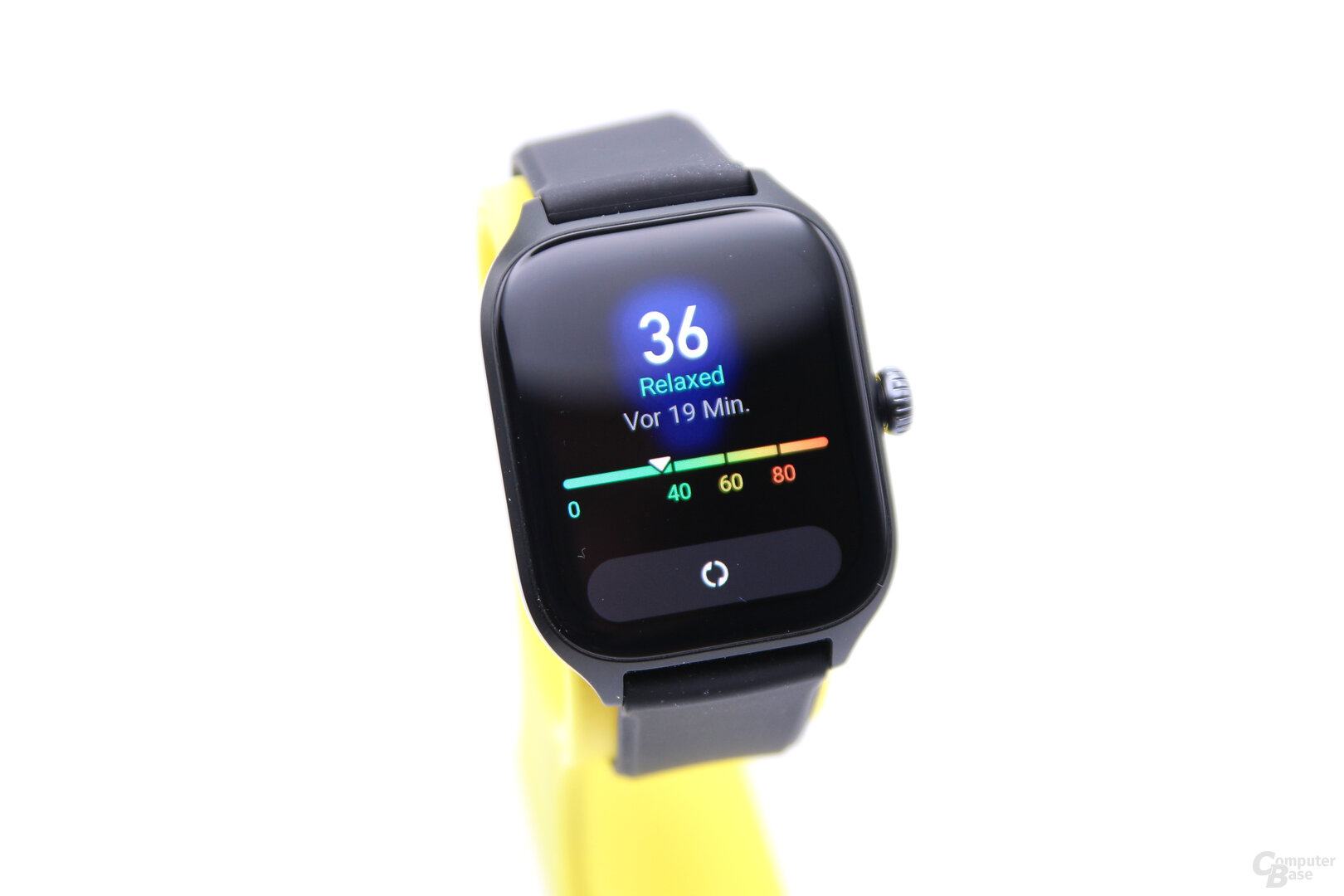
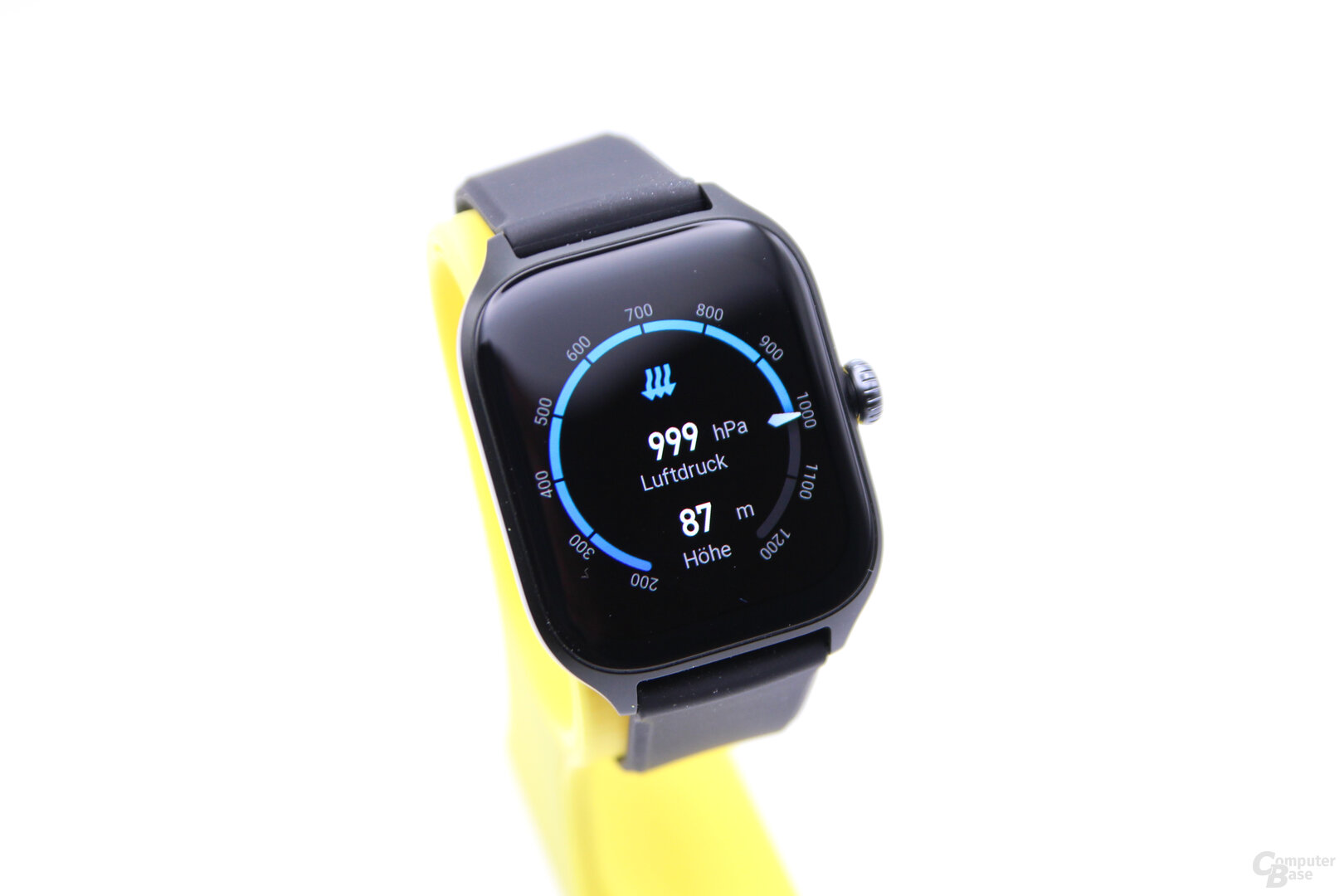
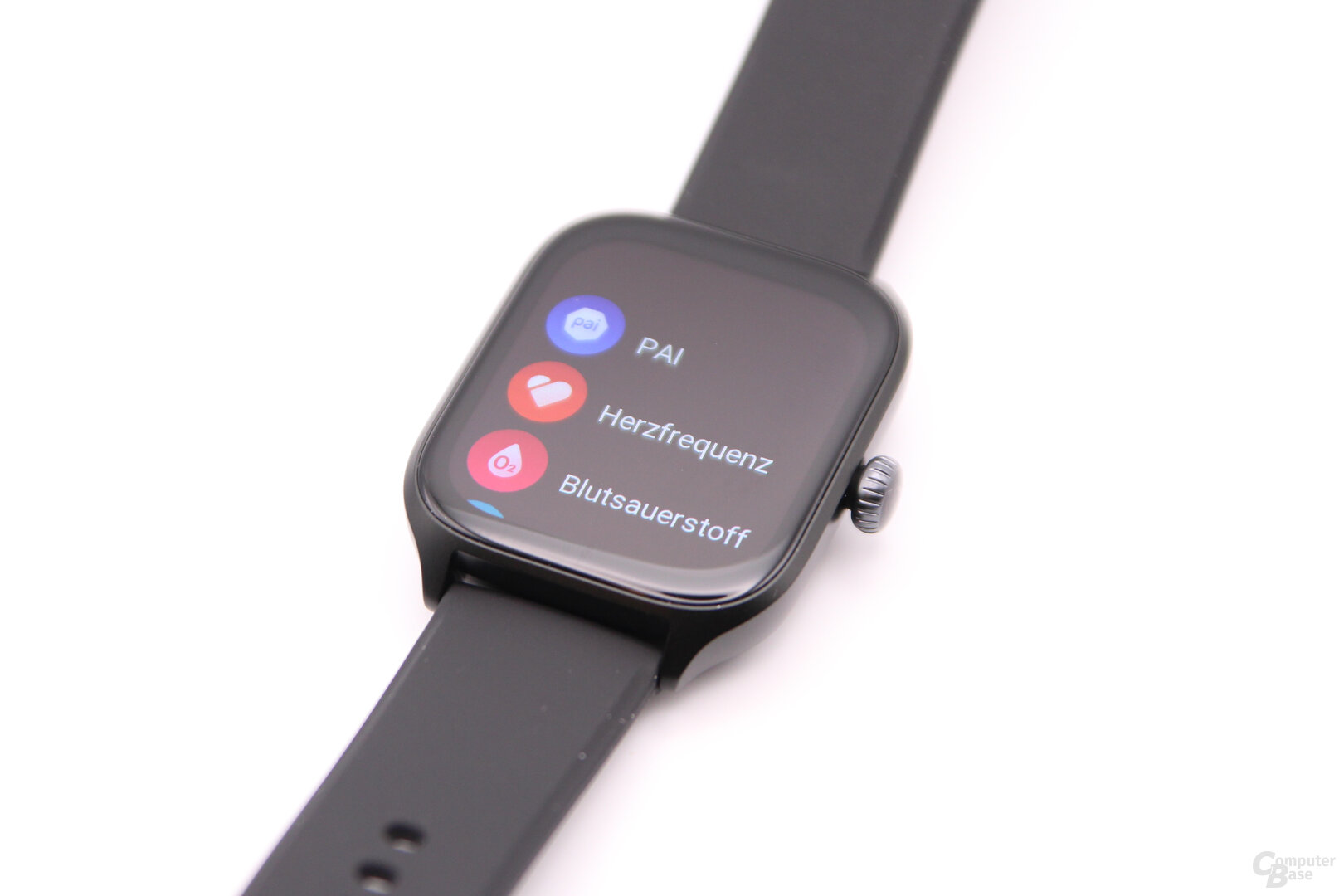
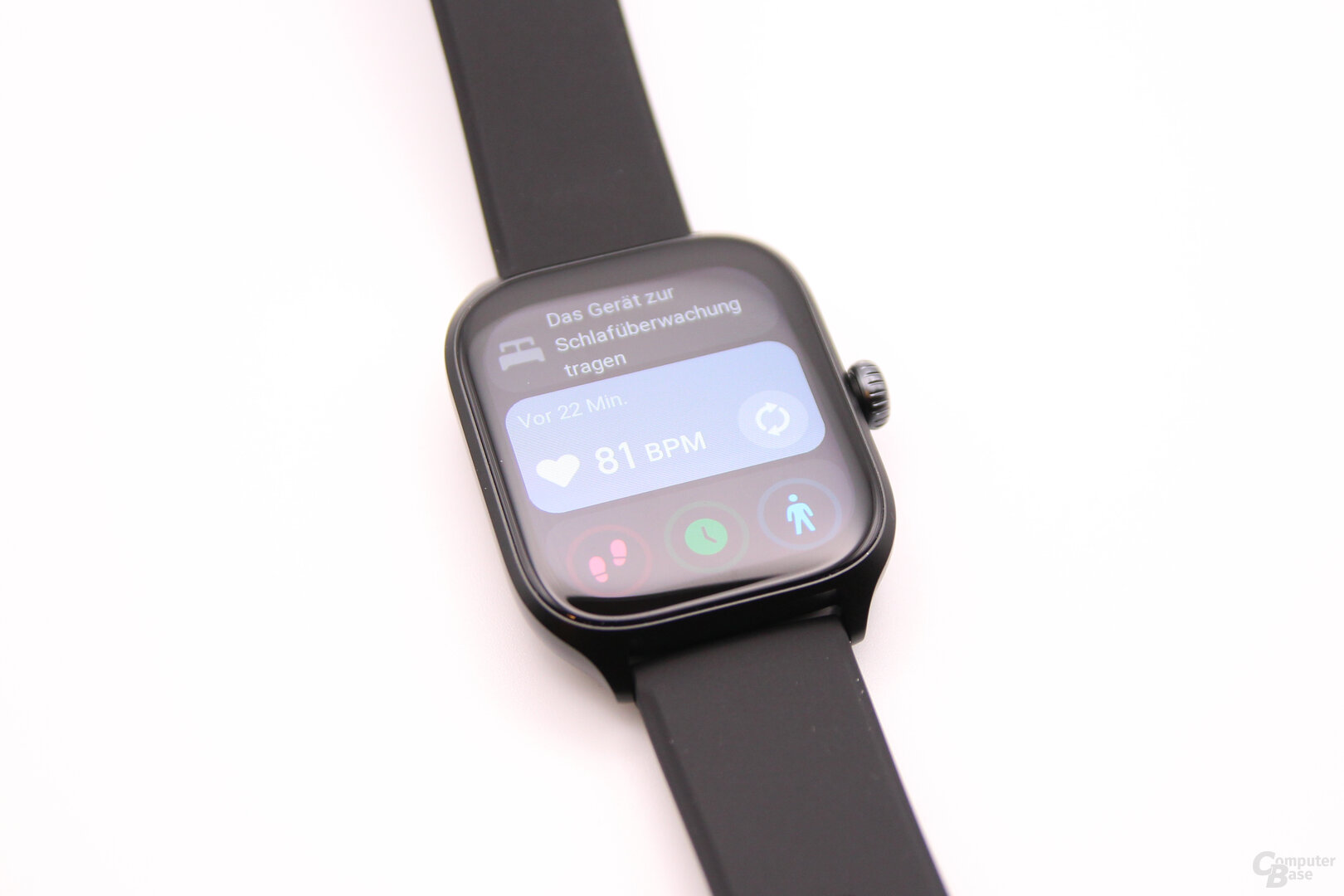
Amazfit GTS 4
As with the T-Rex 2, many sporting activities can also be tracked with the GTS 4. Amazfit focuses on mass here, because there are now more than 150 sports modes to choose from. The eight sports modes, including training, do not have to be selected and started manually by the user, but the GTS 4 recognizes them via its sensors based on the typical movements. These are treadmill, outdoor running, cross trainer, outdoor cycling, indoor walking , rowing machine, pool swimming and walking. New is the support of 15 strength training exercises, whereby the GTS 4 can automatically recognize the repetitions, sets and rest periods of the user. Training data can also be synchronized with Strava via the connected smartphone.
No temperature sensor and no blood pressure
However, the Amazfit GTS 4 lacks two features that many new smartwatches offer this year. It does not have a skin temperature sensor, nor can it be used to measure blood pressure. Both aspects that the Samsung Galaxy Watch 5 has, albeit with an unknown use for the temperature sensor. Apple uses temperature sensors in the Watch Series 8 and Watch Ultra, but only records skin temperature at night and does not allow manual measurements.
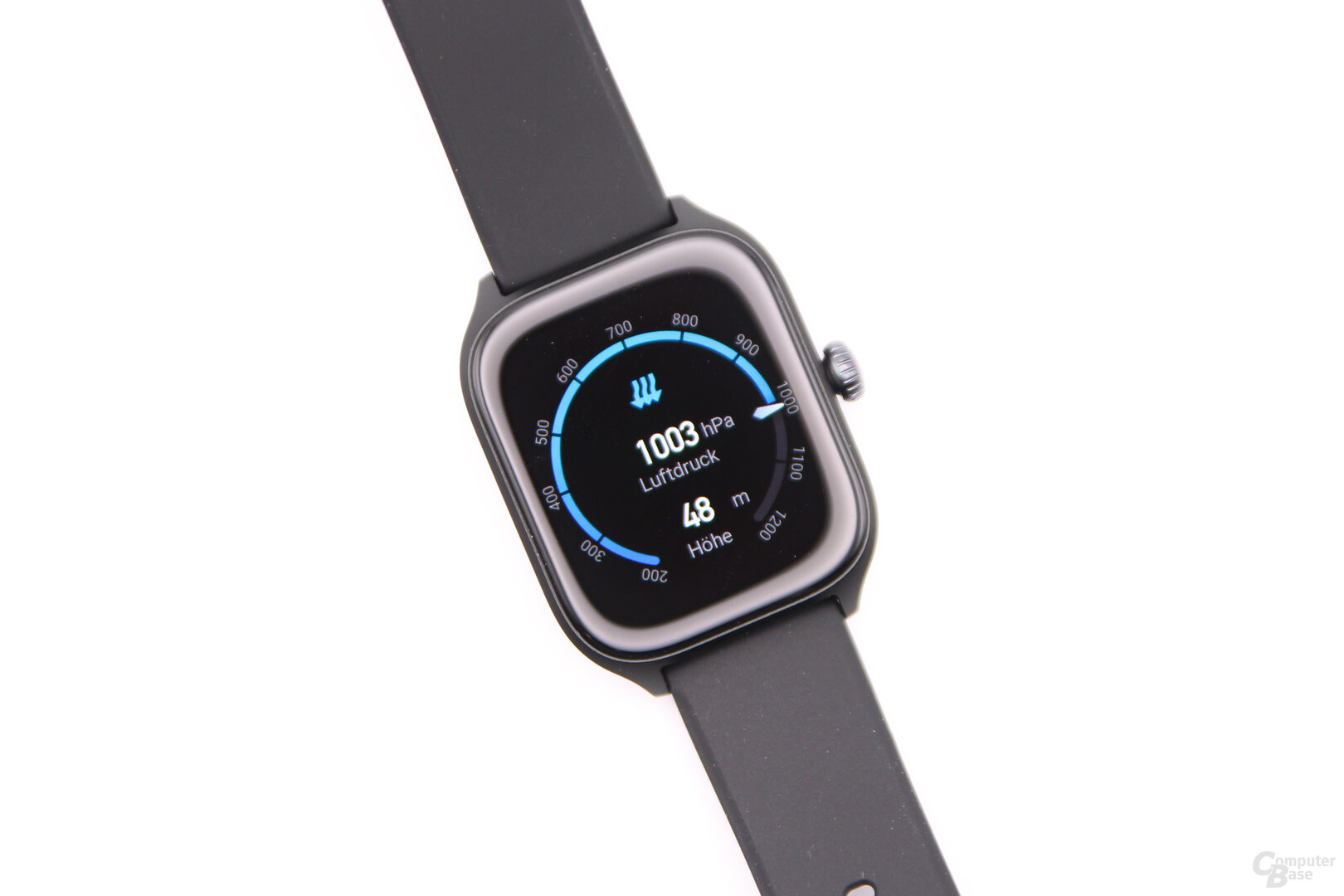 Amazfit GTS 4
Amazfit GTS 4Route navigation and 6 location standards with updates
With the GTS 4 there are also innovations in the location services and their use, some of which were taken over from the T-Rex 2. What is new is that the GTS 4 is equipped for the first time with circularly polarized dual-band GPS antenna technology, which is said to offer a high signal strength for position determination even in complex environments. The dual-band GPS antenna with circular polarization can – at least in theory – receive twice as many satellite signals as watches with linear polarized GPS antennas. All satellites broadcast circularly polarized signals, so smartwatches that use a linearly polarizing GPS antenna can only pick up about 50 percent of the signals. At the start of the smartwatch, the five location standards GPS, GLONASS, Galileo, BDS and QZSS are supported, as was the case with its predecessor. With a future firmware update, the technology will dominate six satellite systems.
In conjunction with the GPS, the Amazfit GTS 4 offers the route import function recently introduced with the T-Rex 2, so that hiking trails or cycling and running routes can be loaded onto the watch in advance via the Zepp app, and then only with to be able to navigate with the smartwatch, which sounds an alarm if you deviate from the route. As with the start of the T-Rex 2, a firmware update is also required on the GTS 4, which is not yet available. Since the function itself is identical, reference is made here to the test of the T-Rex 2, in which it is discussed in more detail.
Smoother Zepp OS lacks support
The Amazfit GTS 4 also runs with the in-house Zepp OS. In the new version, which is already being used on the T-Rex 2, the operating system is much smoother than before. Although Amazfit tries to cover the important functions itself, the operating system lacks the support of third-party developers. Therefore, Amazfit simply has no choice but to offer all the functions itself, which is not possible because there is usually no connection to the apps on the smartphone. The app store only provides around two dozen apps that can be installed later and many of which are of little use on a daily basis. Third-party developers focus on the dominant watchOS and WearOS platforms because it doesn't make sense for them to support a single manufacturer's operating system. The most important external connection options have already been mentioned with GoPro and Home Connect, which reveals what a huge gap there is in comparison to other smartwatch operating systems.
- < figure class="gallery__figure">
 Amazfit GTS 4
Amazfit GTS 4
Image 1 of 10
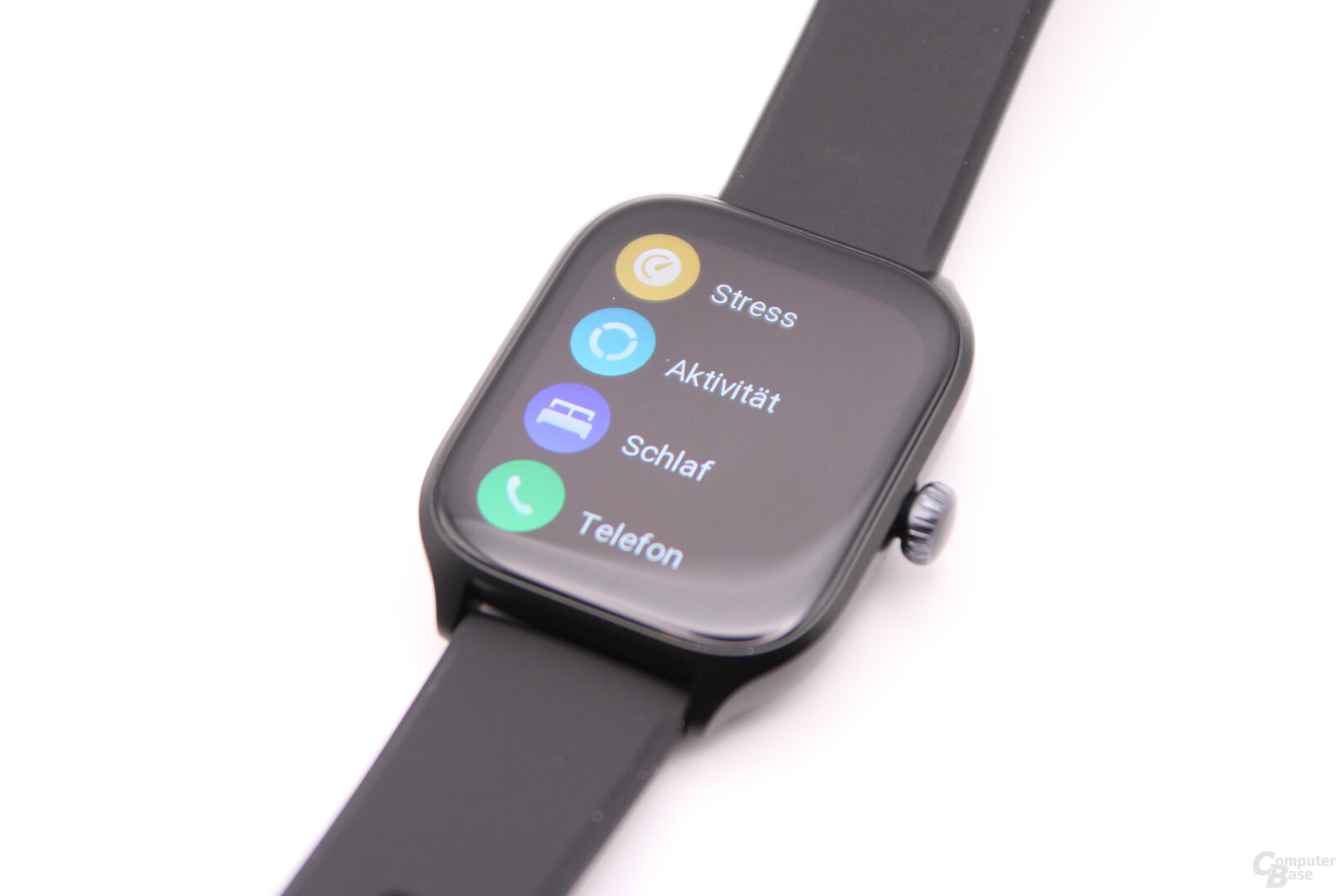

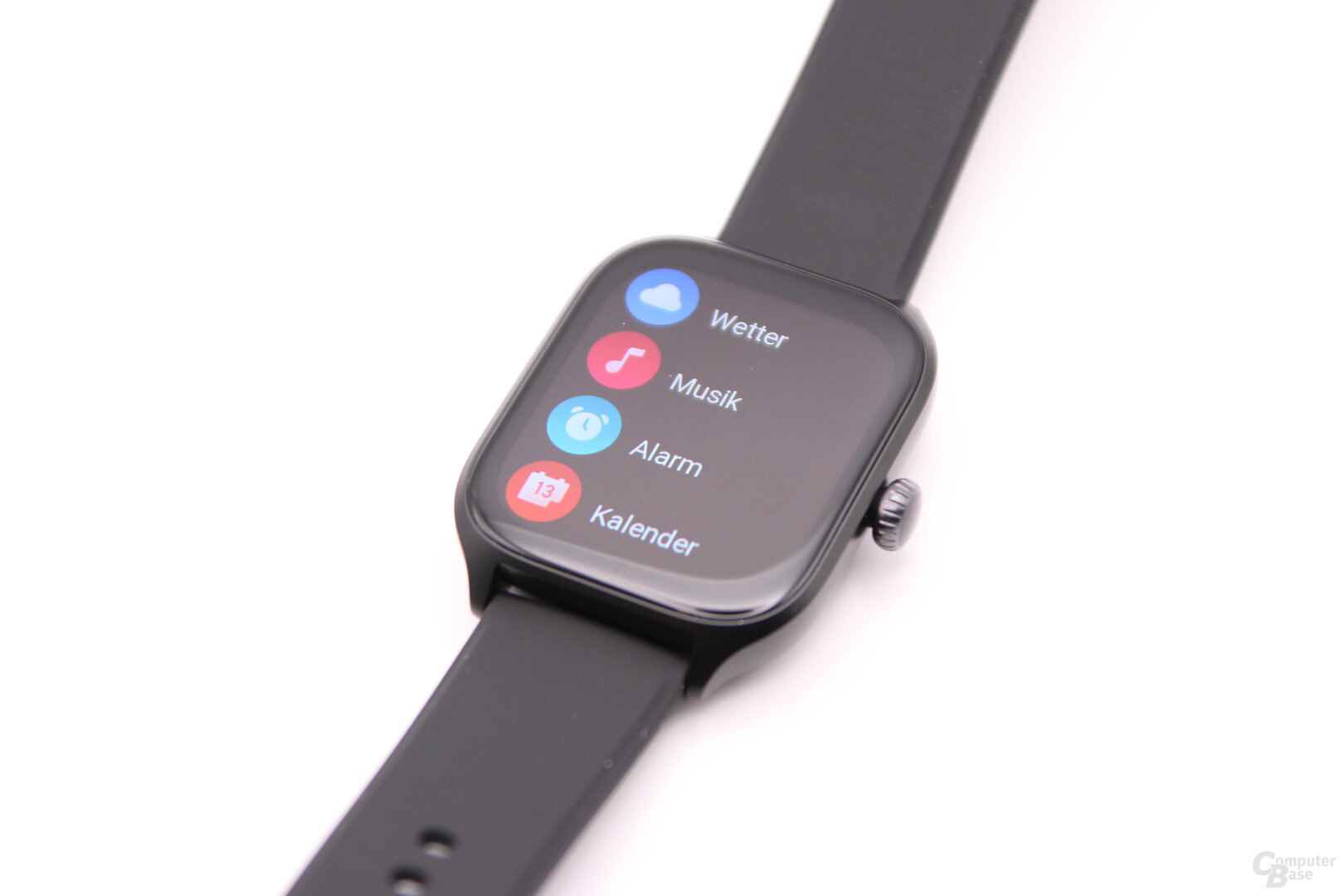
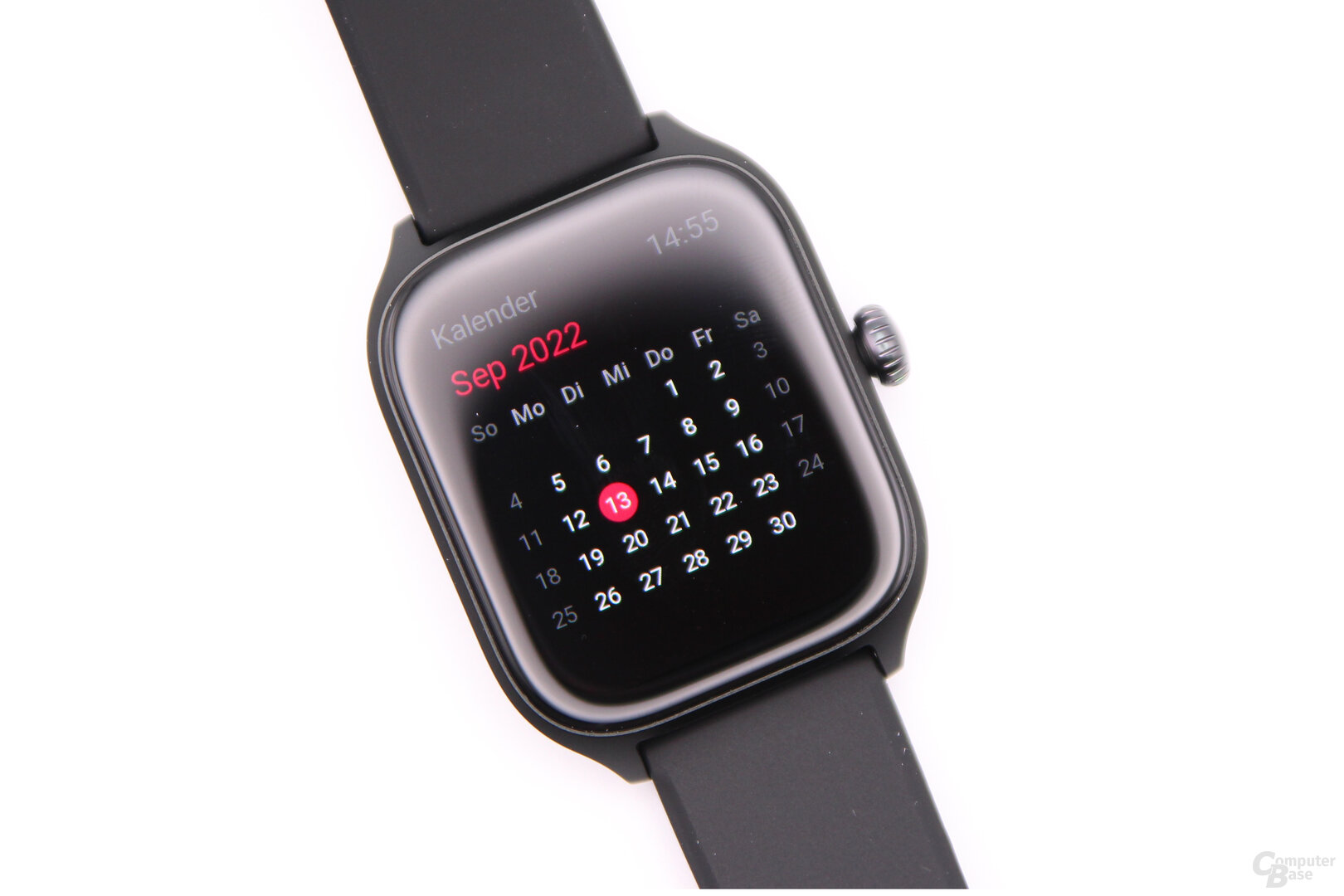


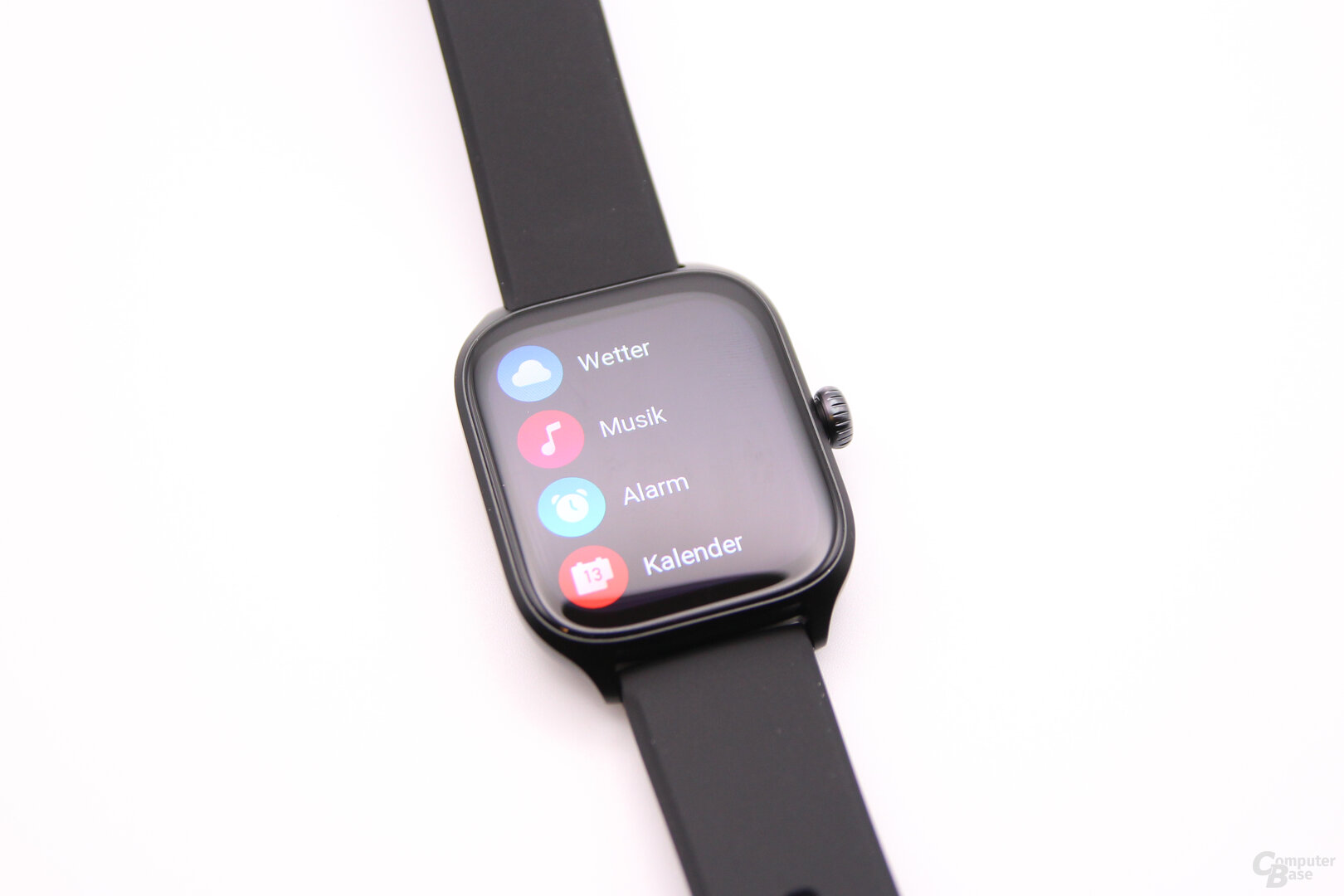
The diversity of the dials is positive again, especially in comparison to watchOS. Although there are many, not all are free, so that you sometimes have to spend between 99 cents and 2.99 euros for a new watch face. Animated watch faces reduce battery life, which Amazfit will indicate upon activation.
- < figure class="gallery__figure">
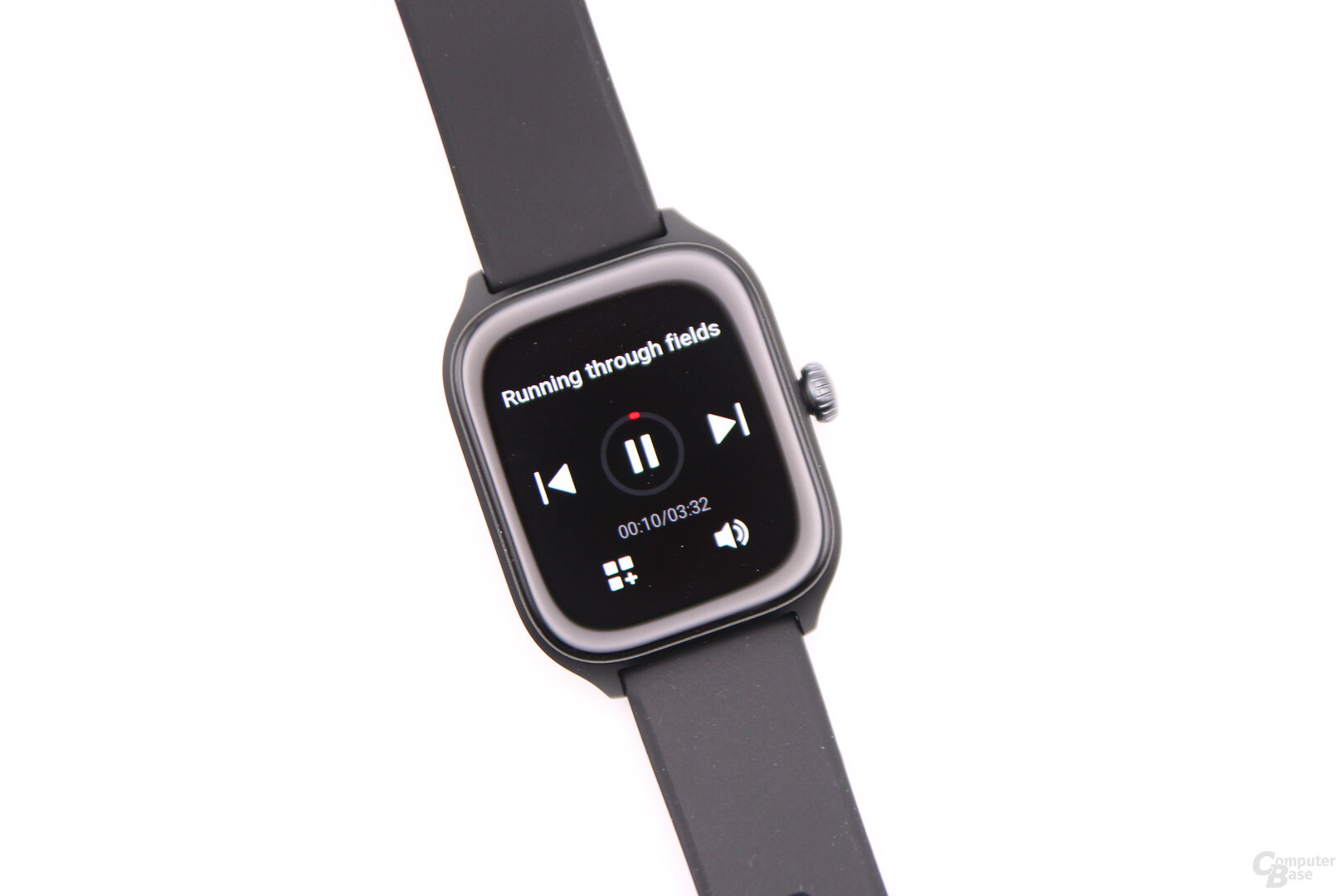 Amazfit GTS 4
Amazfit GTS 4
Image 1 of 6
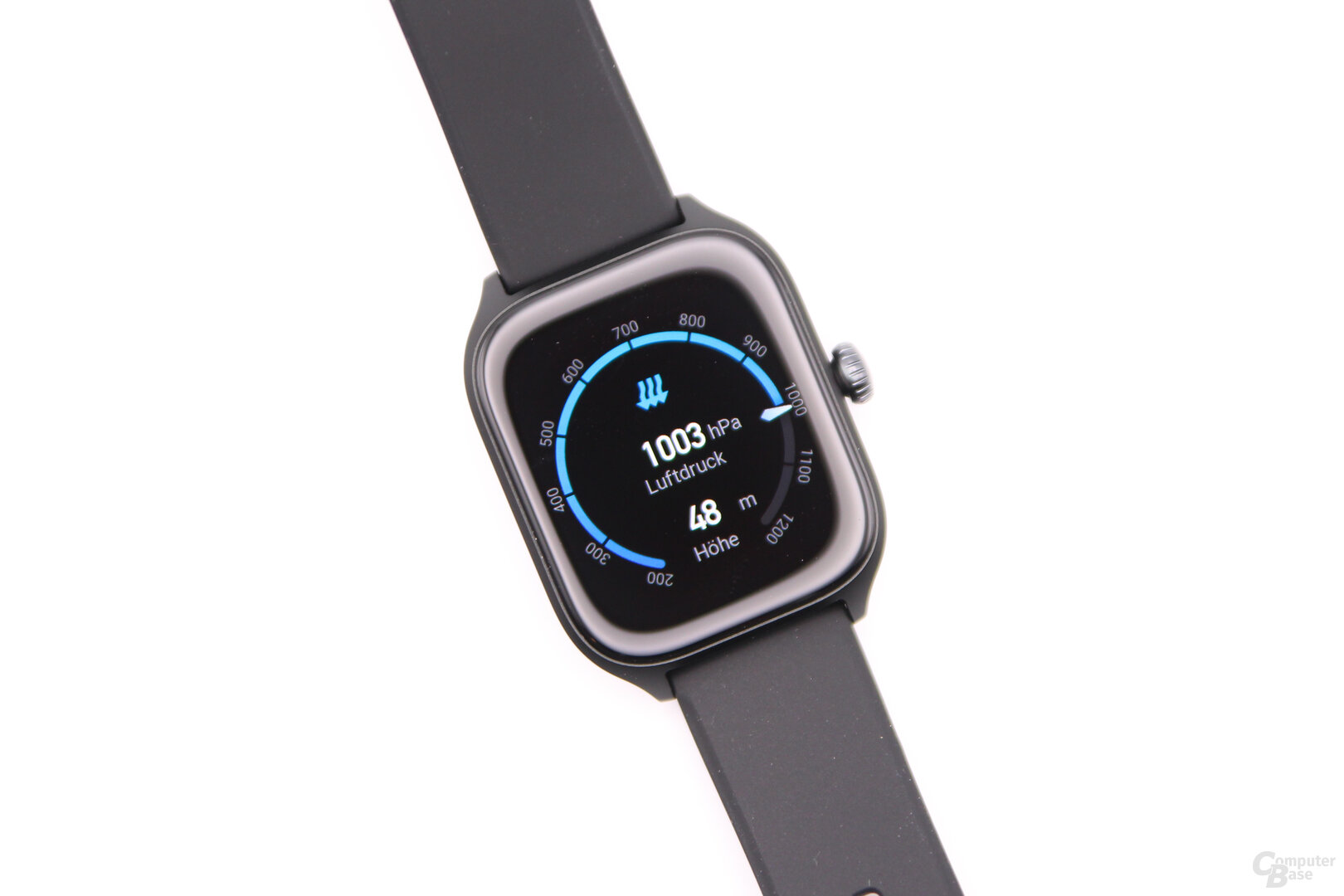

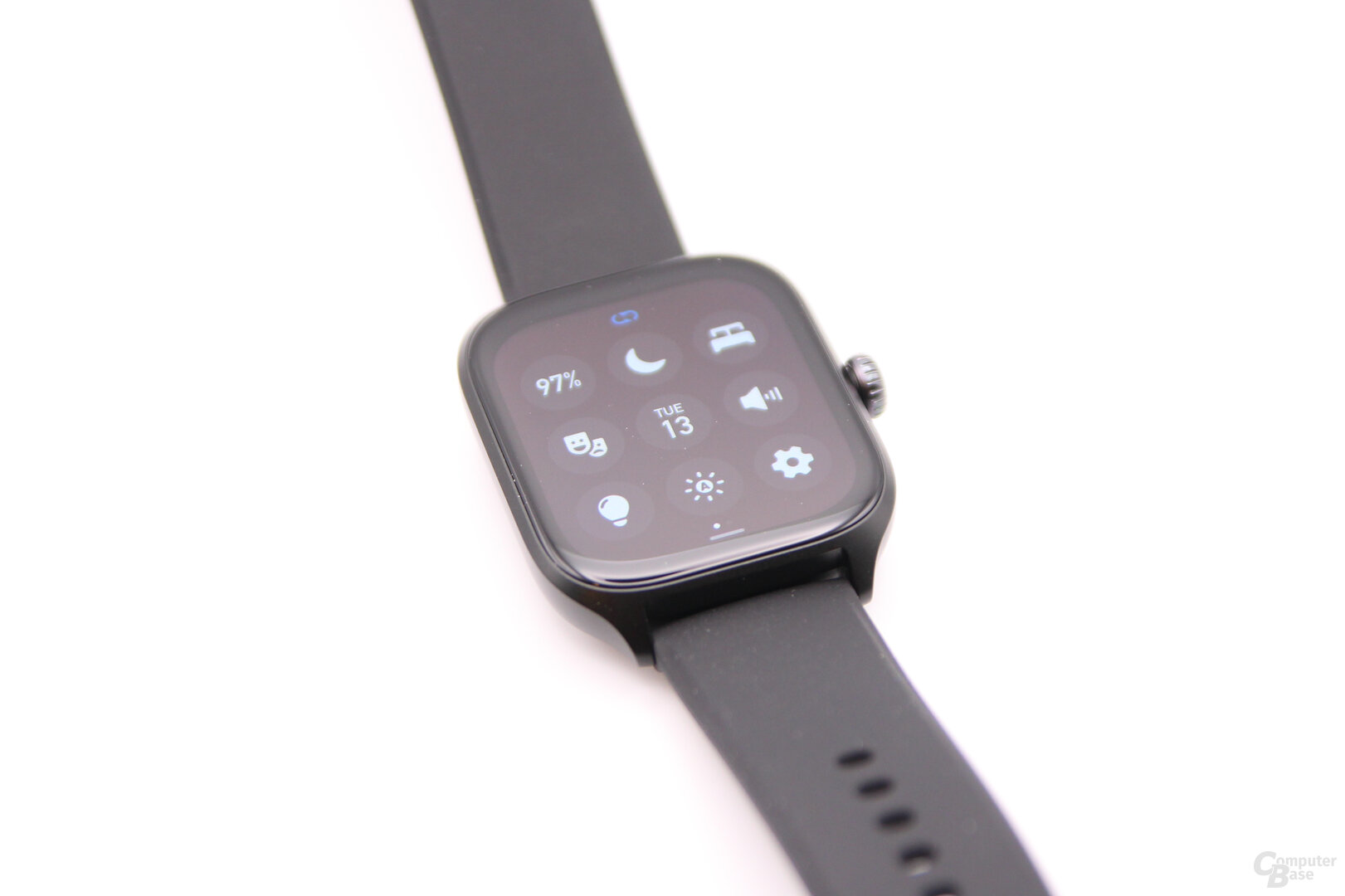


Amazfit GTS 4
After the convincing hardware with very good workmanship and an excellent display, the operating system shows the limits that a manufacturer has if he does not join Wear OS. Because the functions implemented by Amazfit itself are well done and now almost always translated into German without errors, many people now expect more from their smartwatch and in particular unrestricted support for the apps used on the smartphone.
The GTS 4 again offers support for Amazon Alexa and also its own offline language assistant, which can be used to open apps on the watch or adjust functions such as the display brightness. In the test, however, the wrong function was often started. For better understanding, it is always advisable to use English.
 Amazfit GTS 4
Amazfit GTS 4Zepp app for setup and sync
The setup of the GTS 4 is identical to that of the T-Rex 2. The Zepp app, which is available for iOS and Android, must be installed on the smartphone. The app is unchanged compared to the findings in the recently published test of the T-Rex 2, which is why it is only briefly discussed here.
-
 Zepp app with Amazfit GTS 4
Zepp app with Amazfit GTS 4
Image 1 of 50
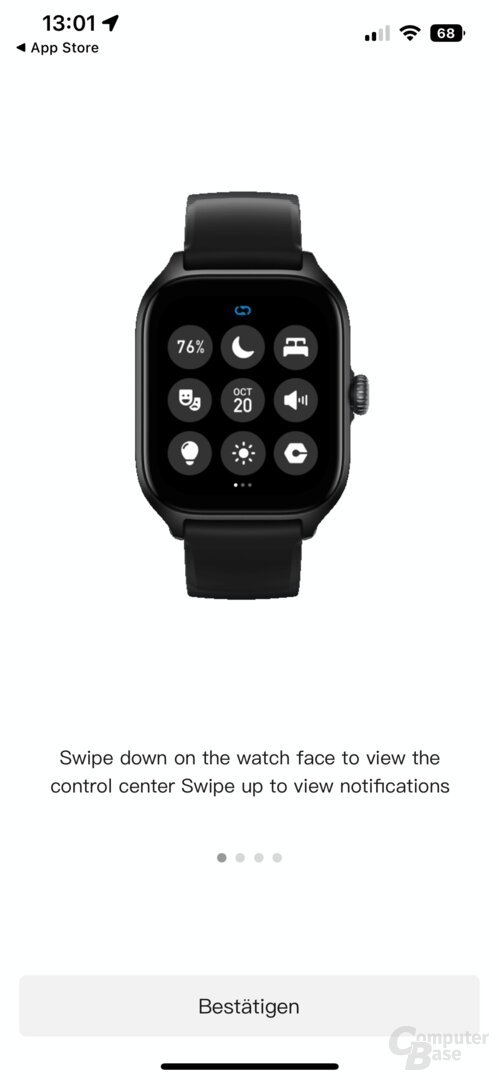

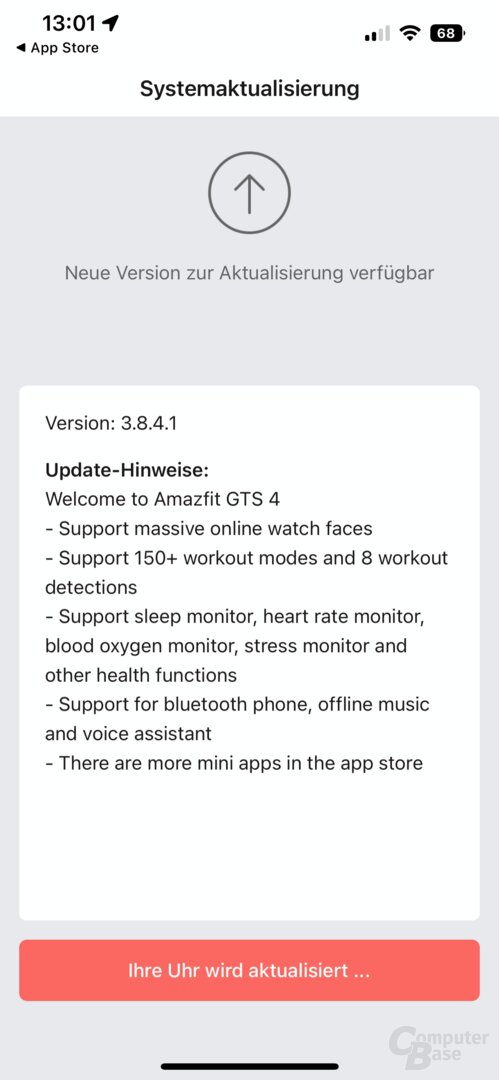
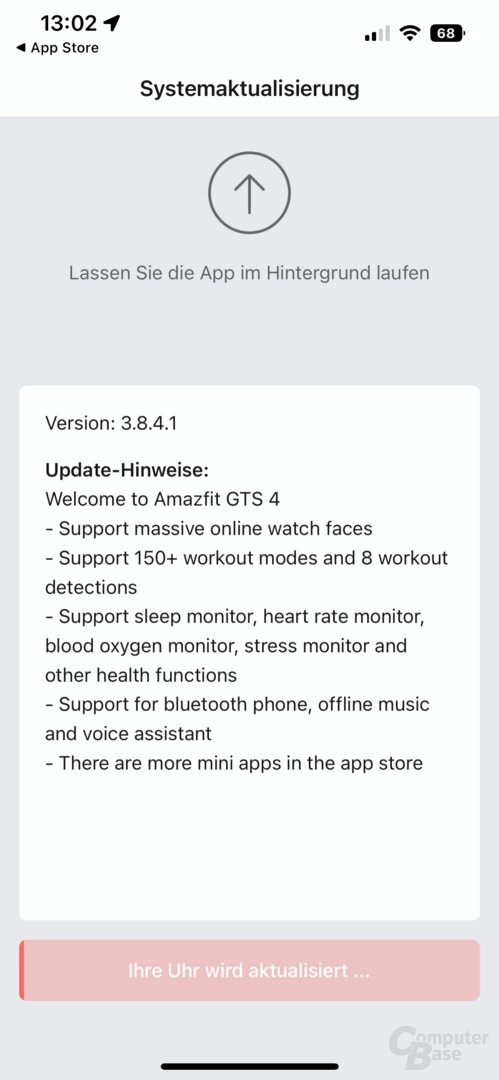

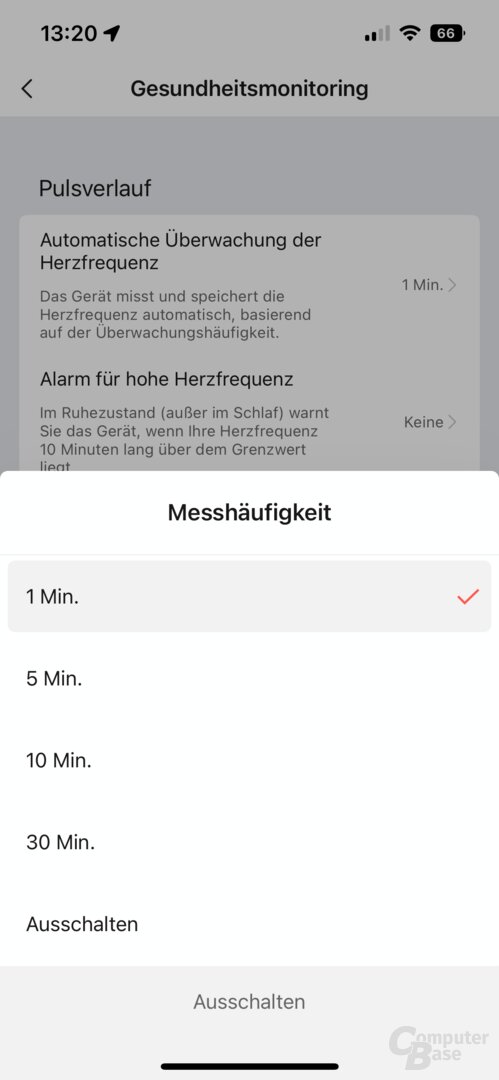
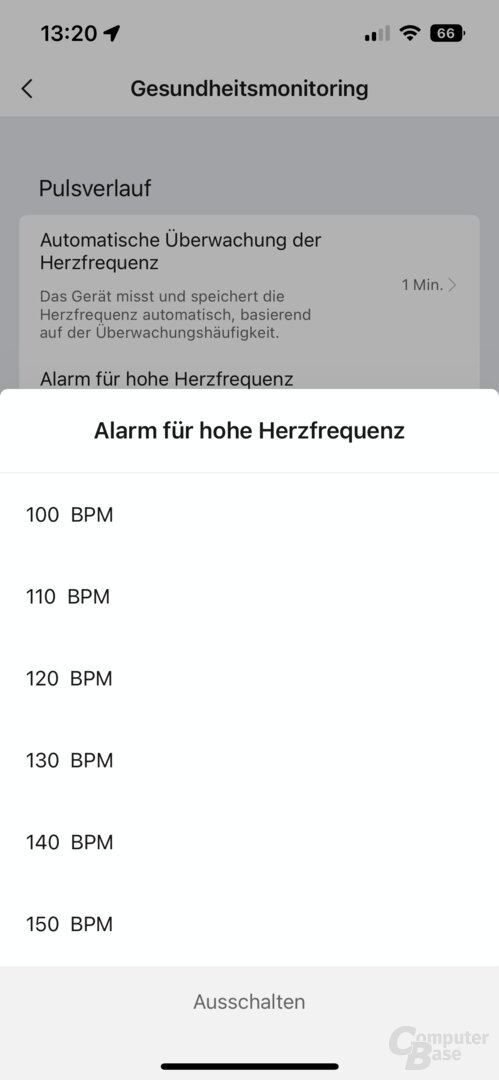
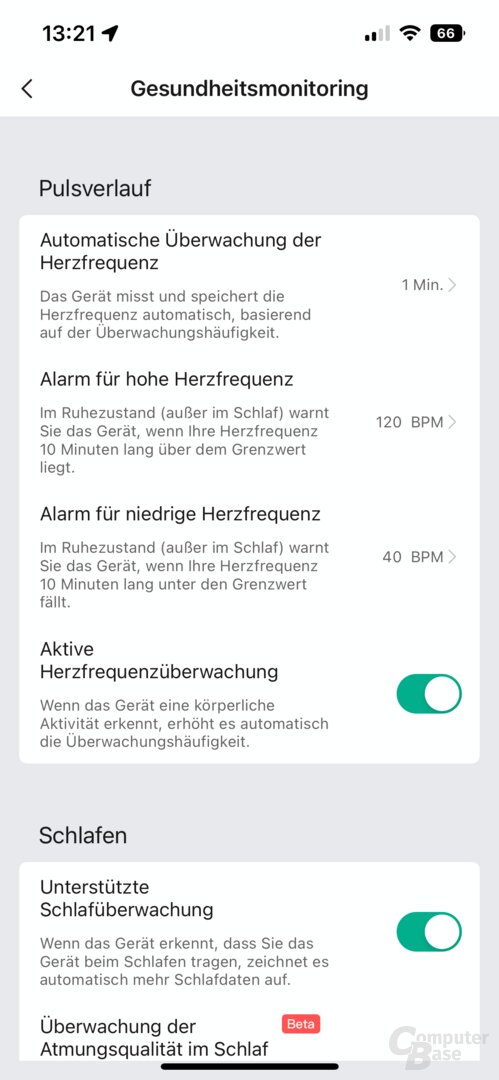

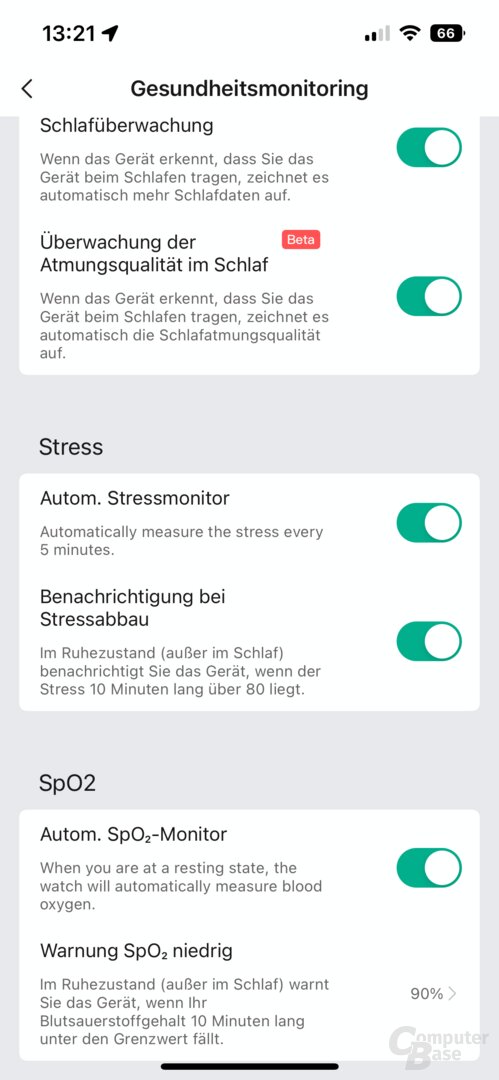
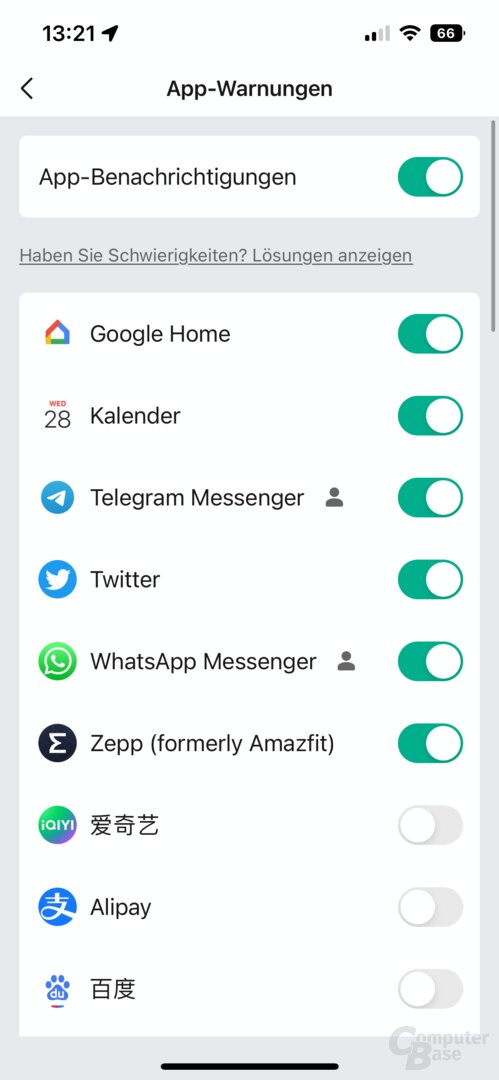
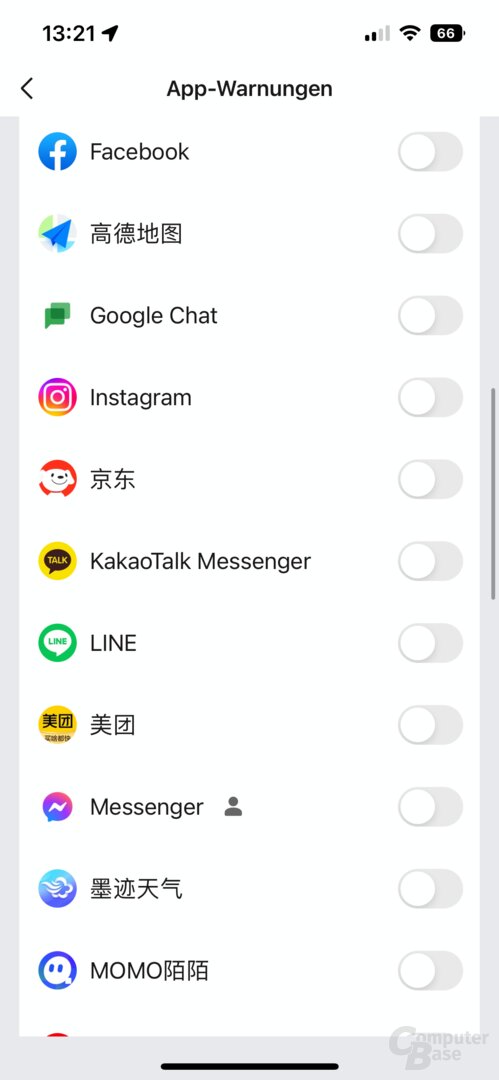
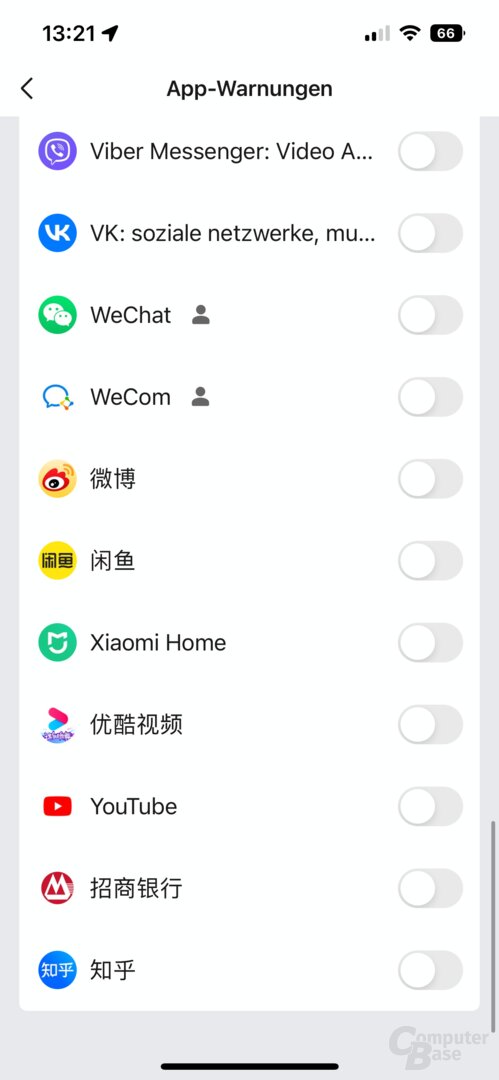
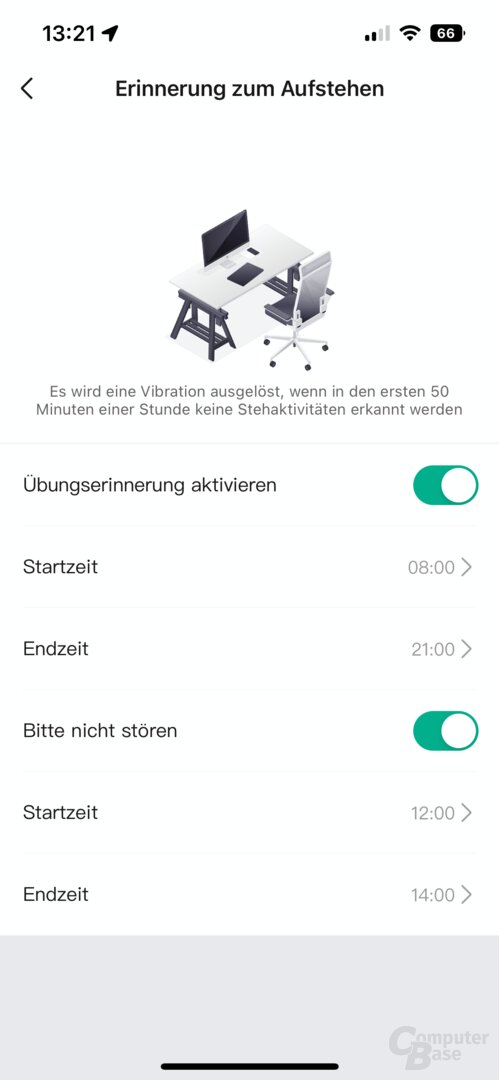
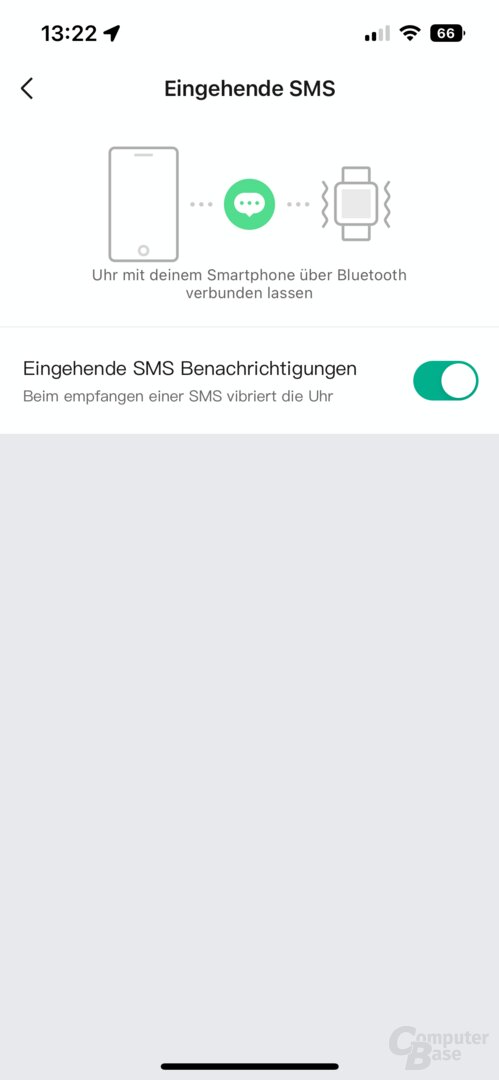


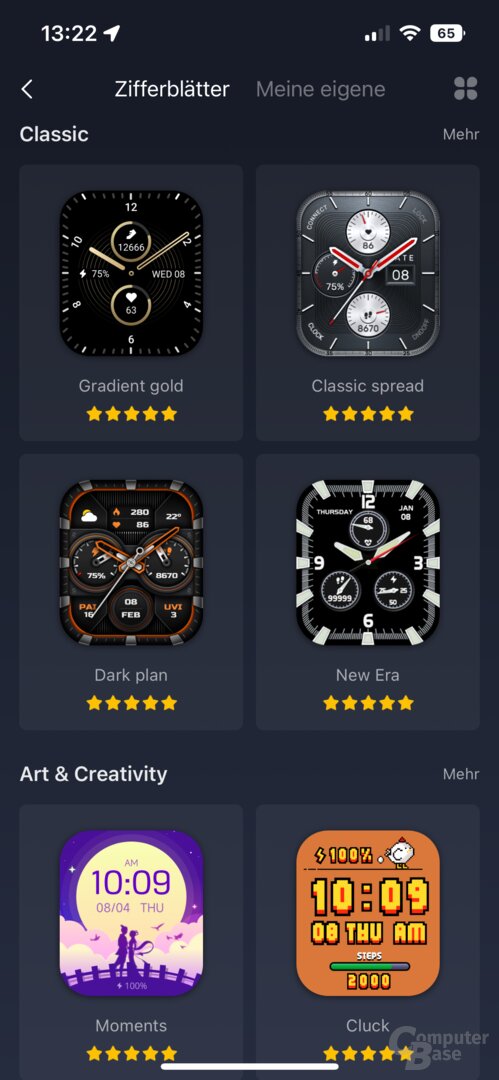
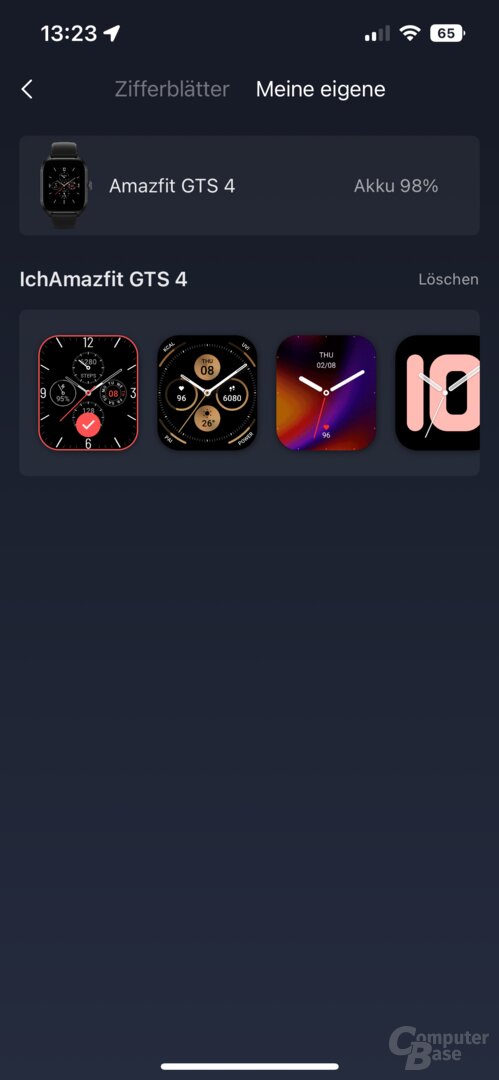
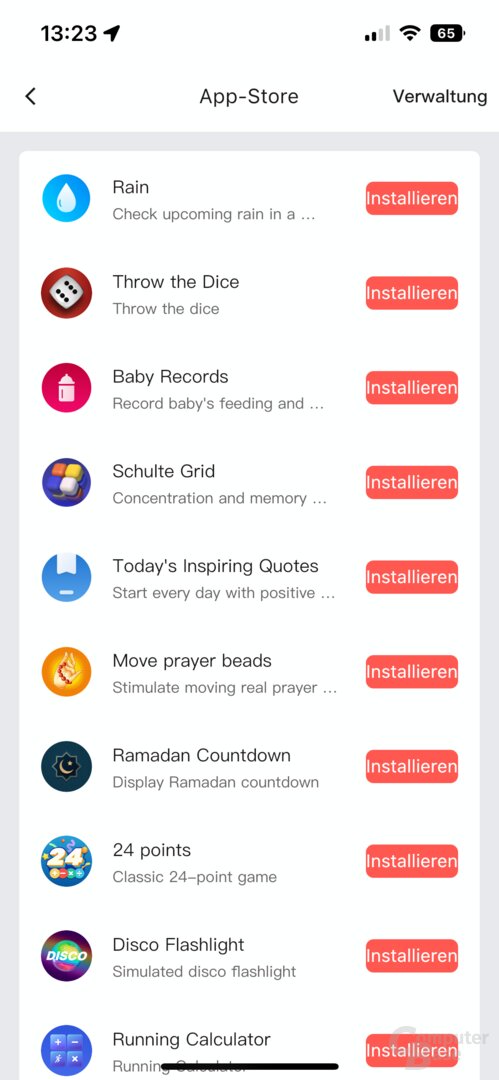
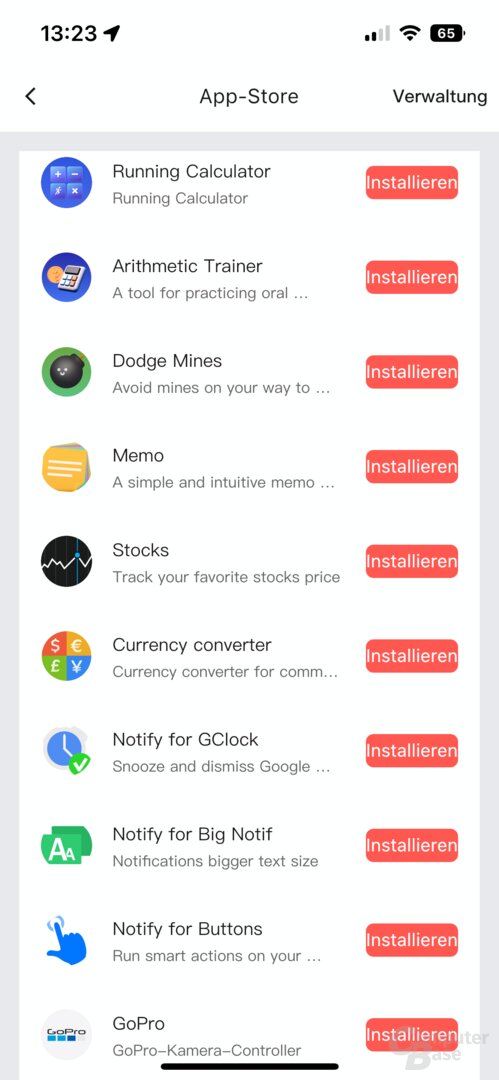


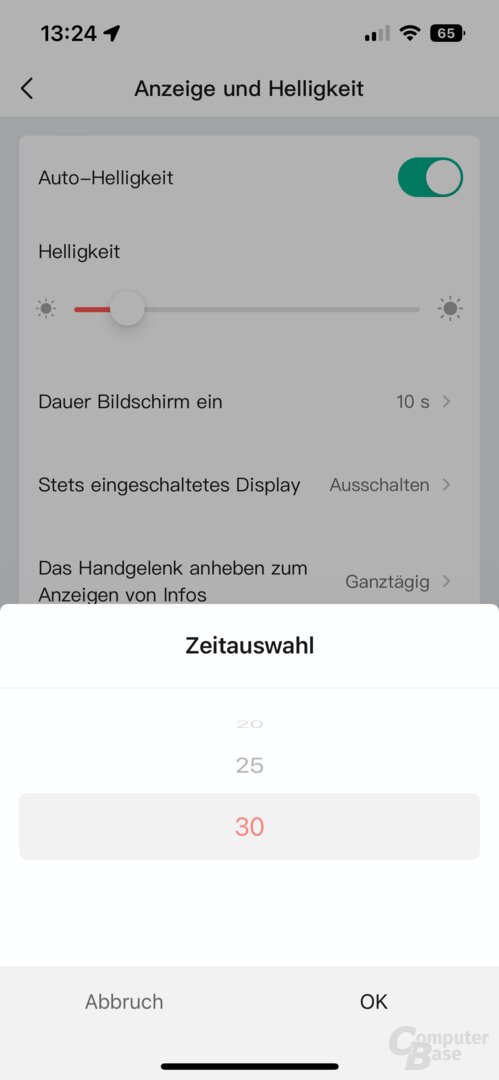

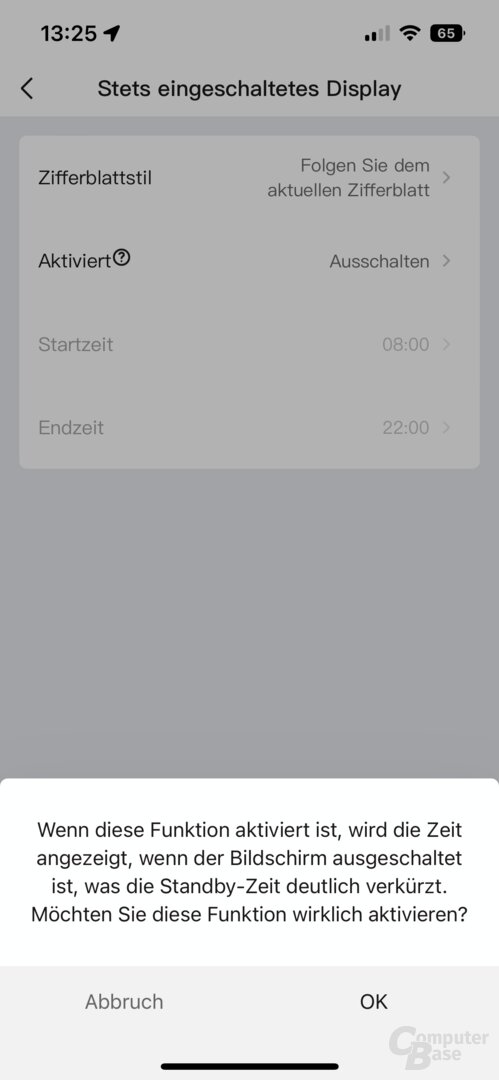
>
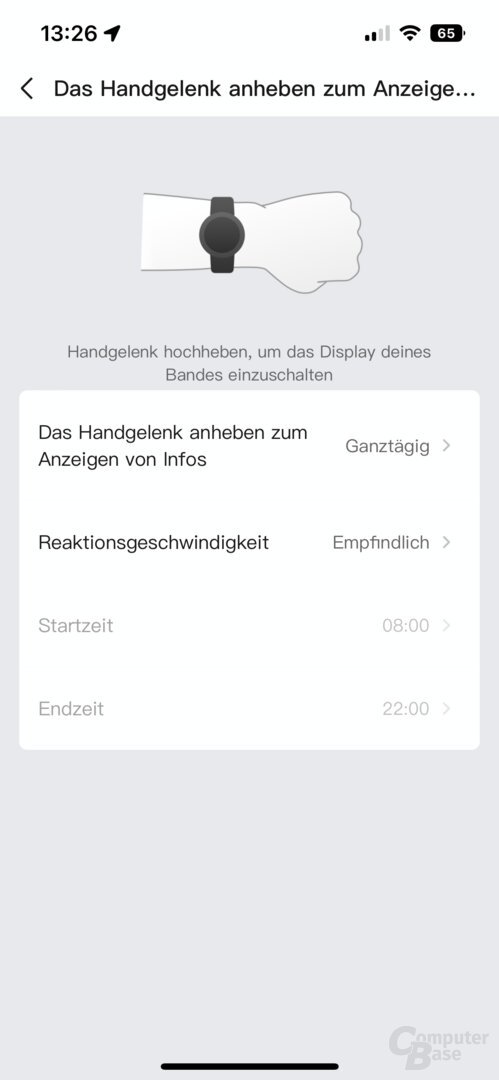
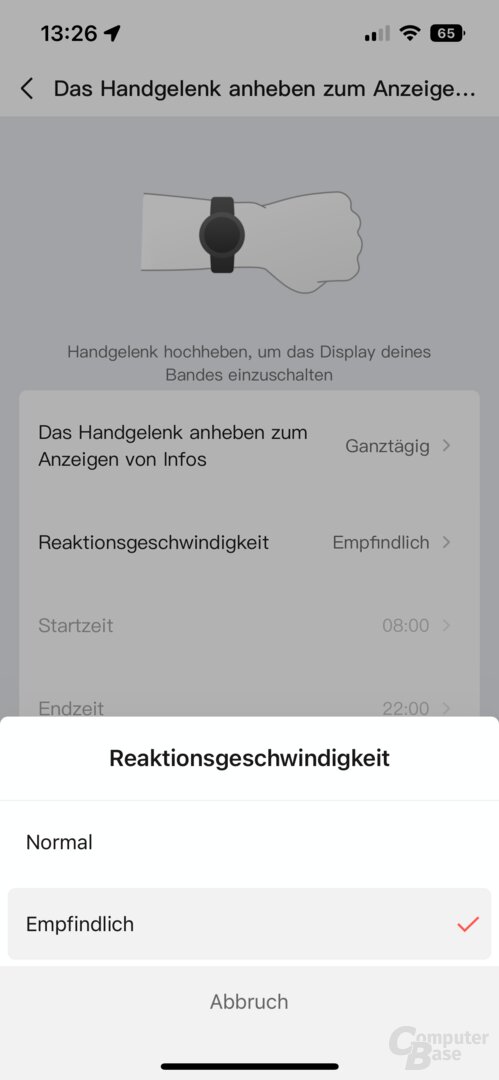


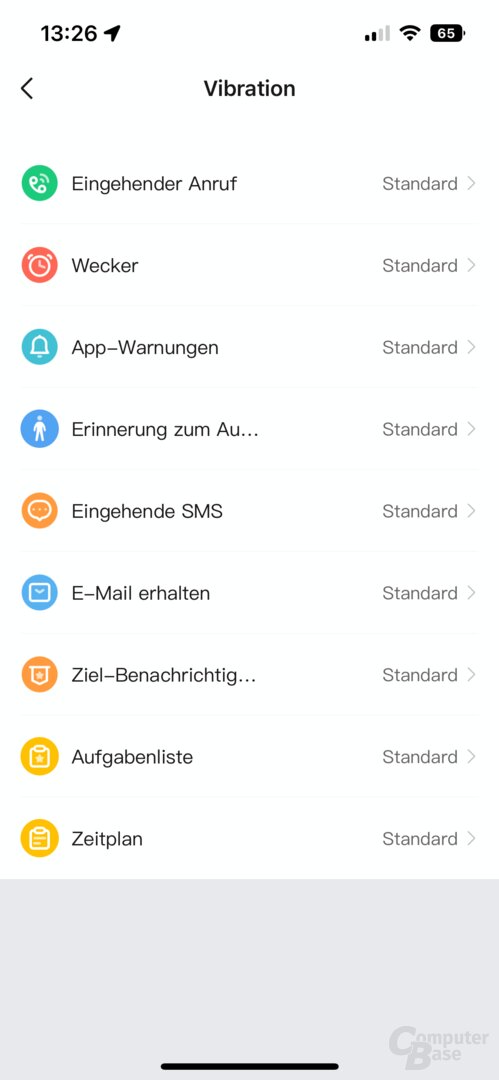
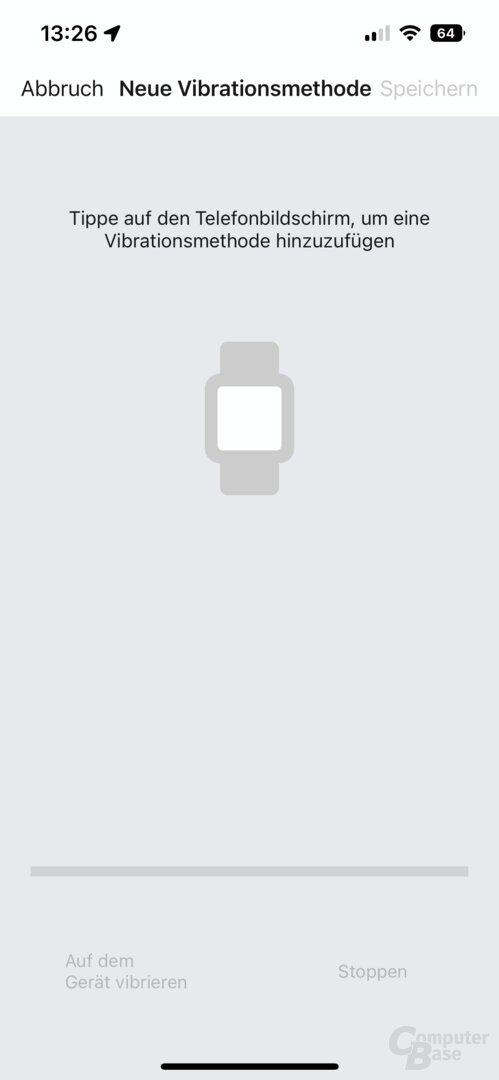

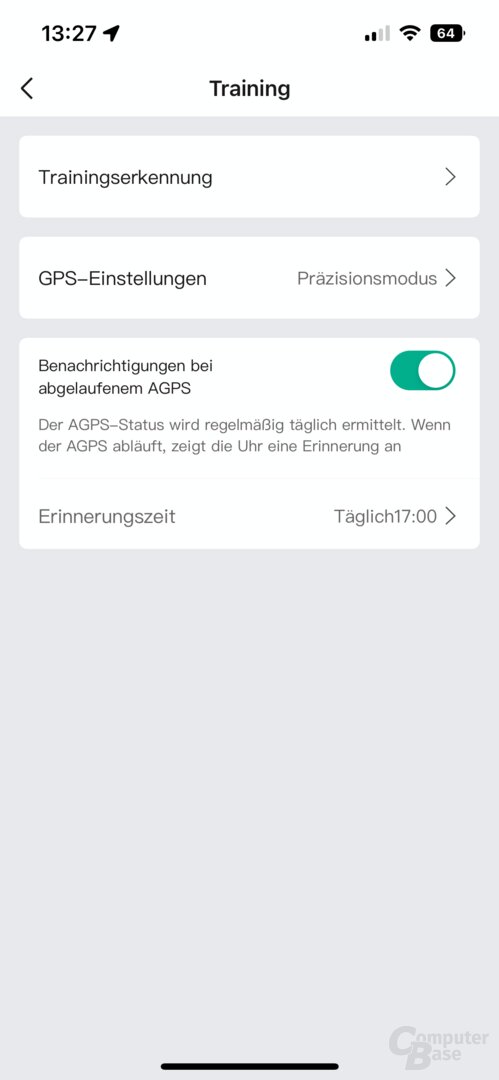
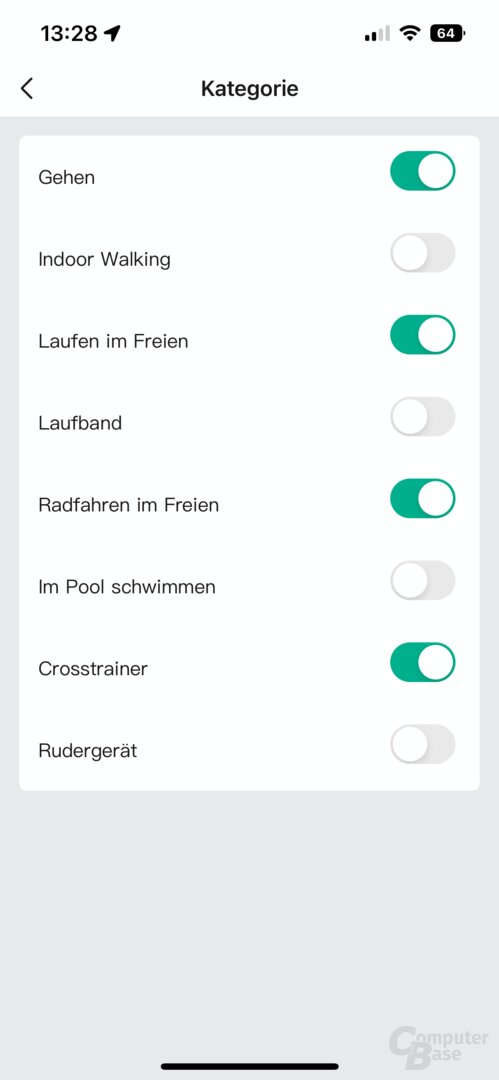
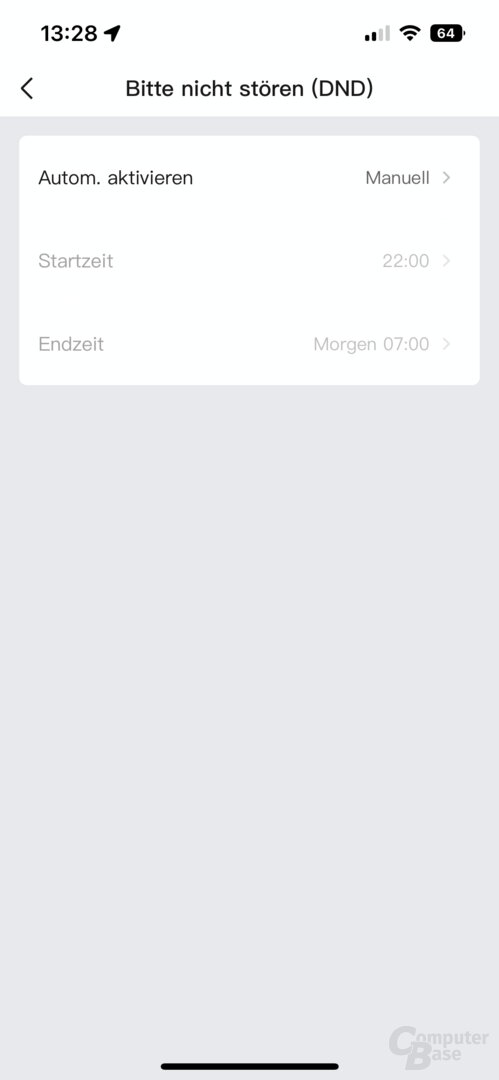



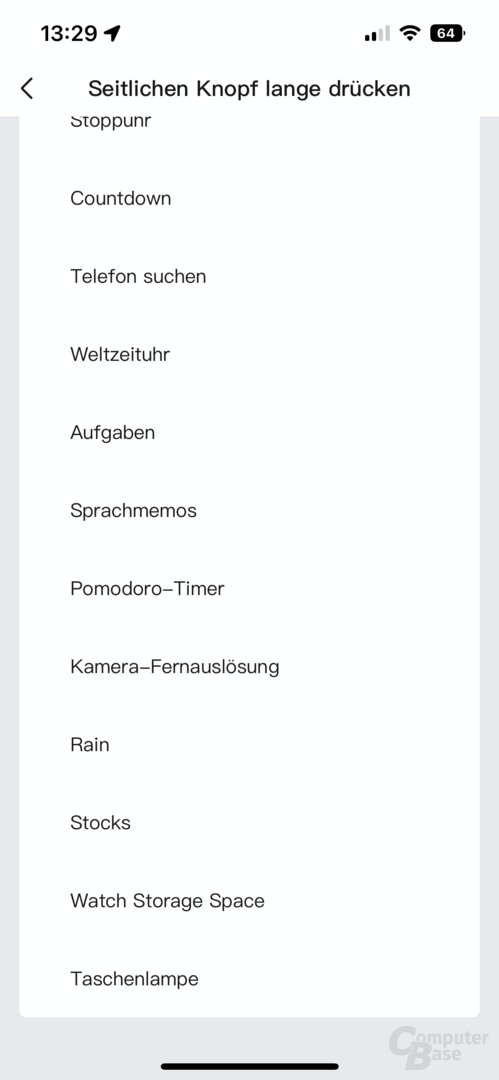
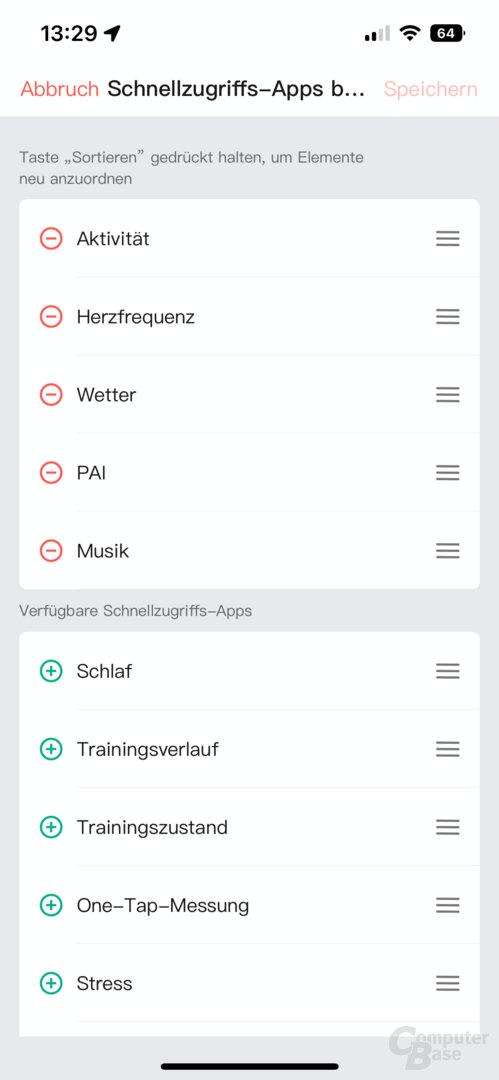
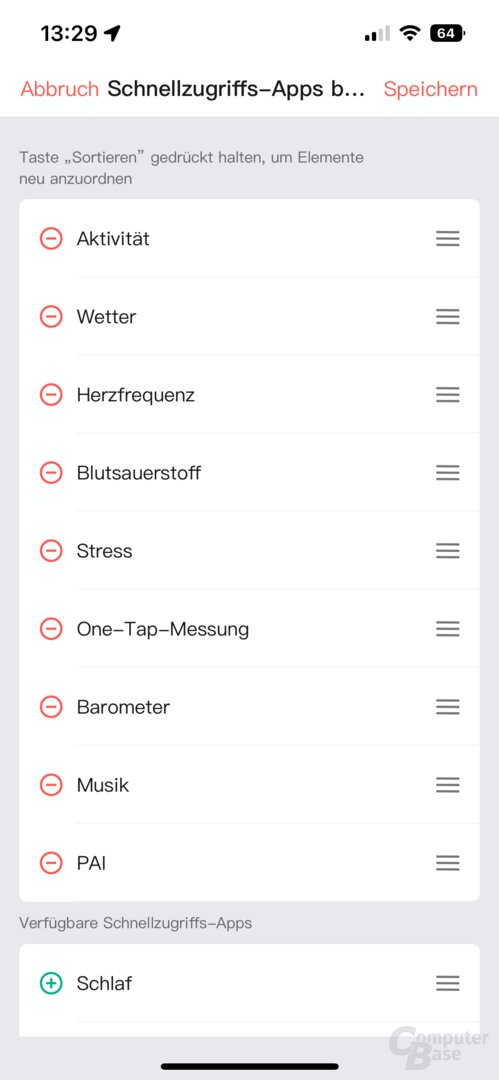

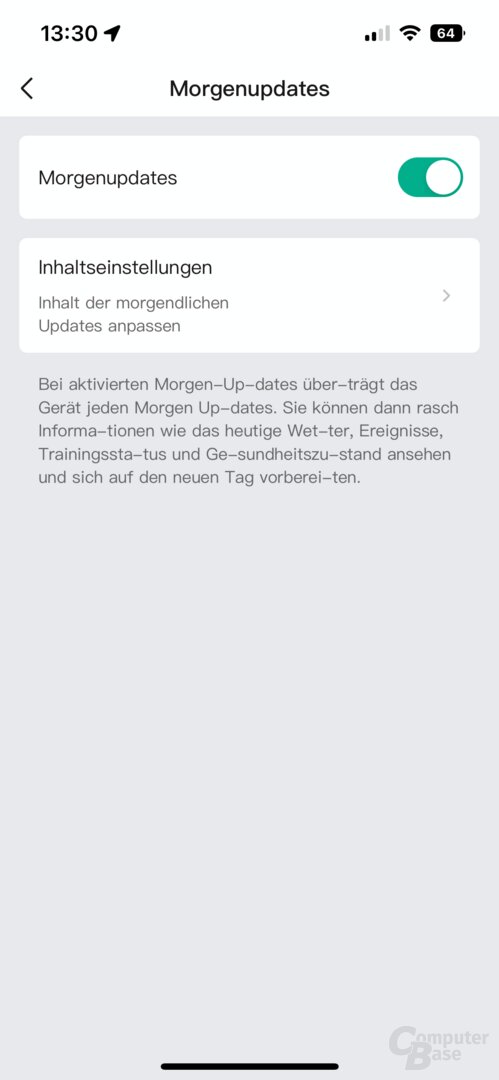
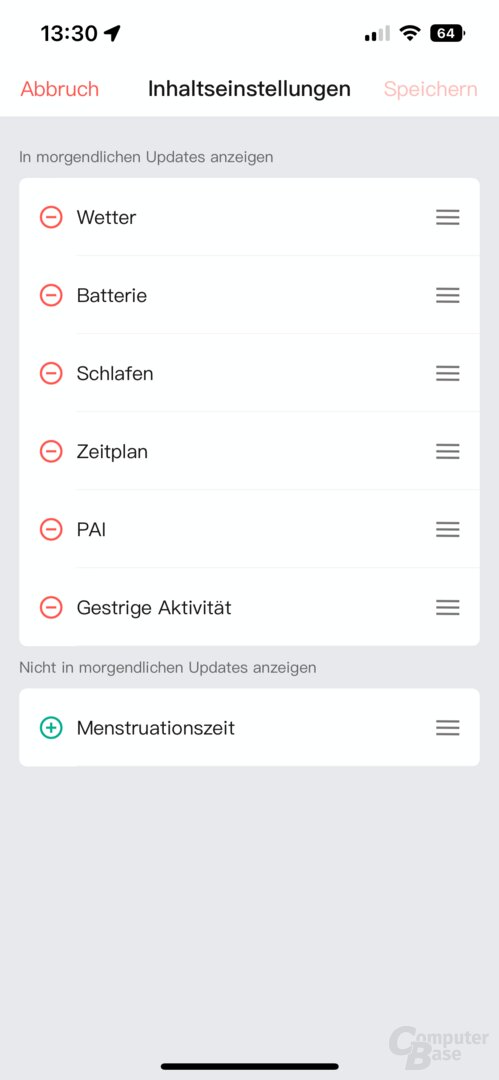
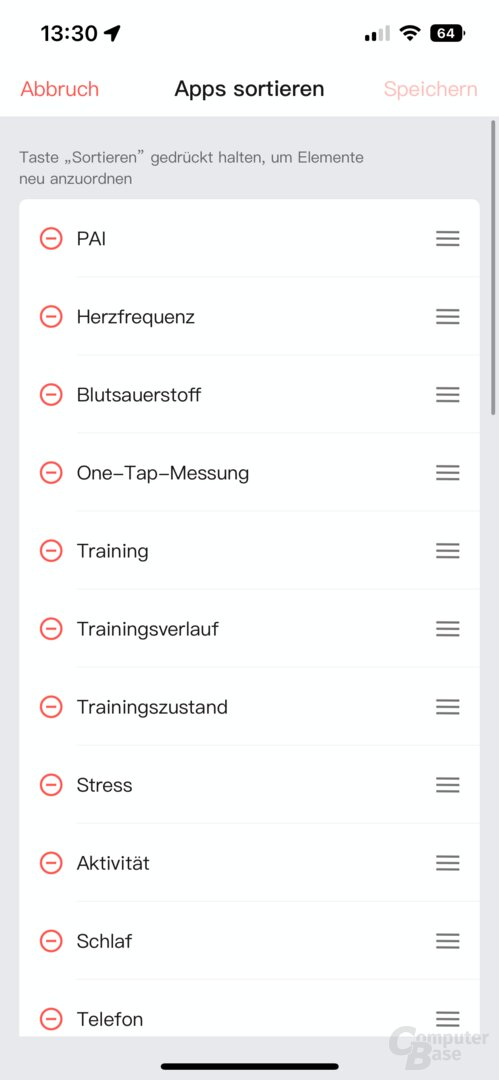
Zepp app with Amazfit GTS 4
The settings and options in the app are numerous, but not always intuitively accessible. Due to the many options for adjusting the individual measurements and functions such as the switch-on time of the display, the battery life of the GTS 4 can be significantly extended. Still cumbersome and as with the T-Rex 2: Each app that is to display notifications on the GTS 4 must be activated individually in the Zepp app after the smartphone has issued the corresponding notifications. All notifications cannot be activated and there is no indication when an app sends a notification whether it should also appear on the watch. The user must therefore check the app from time to time to see which notifications can be reactivated. Due to the lack of support from the app developers just mentioned, it is also not possible to interact with many notifications and images sent to messengers are not displayed directly on the watch.
In addition to the setting options, the Zepp app itself provides an insight into vital data such as PAI, sleep, heart rate, oxygen saturation and steps and allows you to define personal, individual goals. If desired, the watch will remind the wearer to move if they are inactive for a long period of time. This can be adjusted to a period of your choice, so that different working hours can also be taken into account.
- < figure class="gallery__figure">
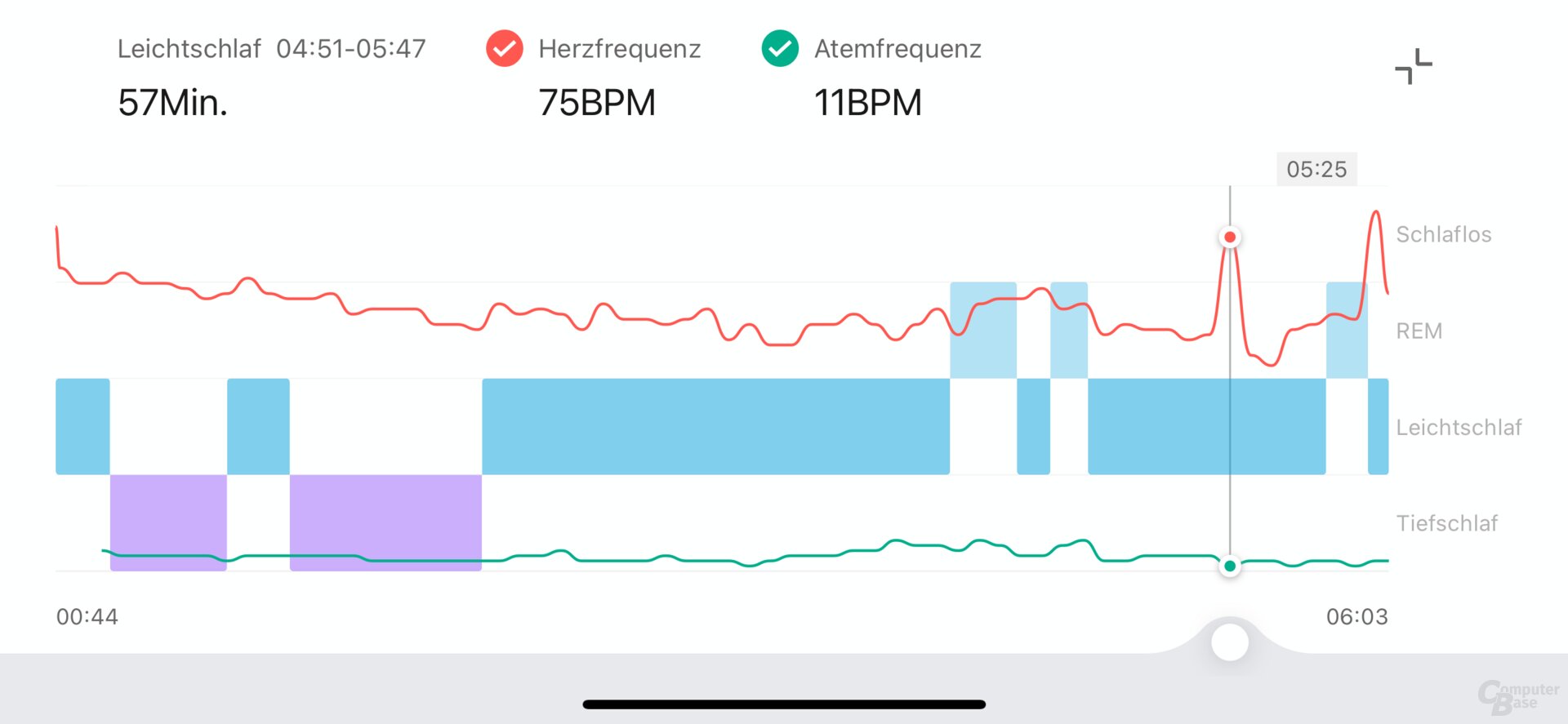 Sleep tracking with the GTS 4
Sleep tracking with the GTS 4
Image 1 of 4
 < /figure>
< /figure>
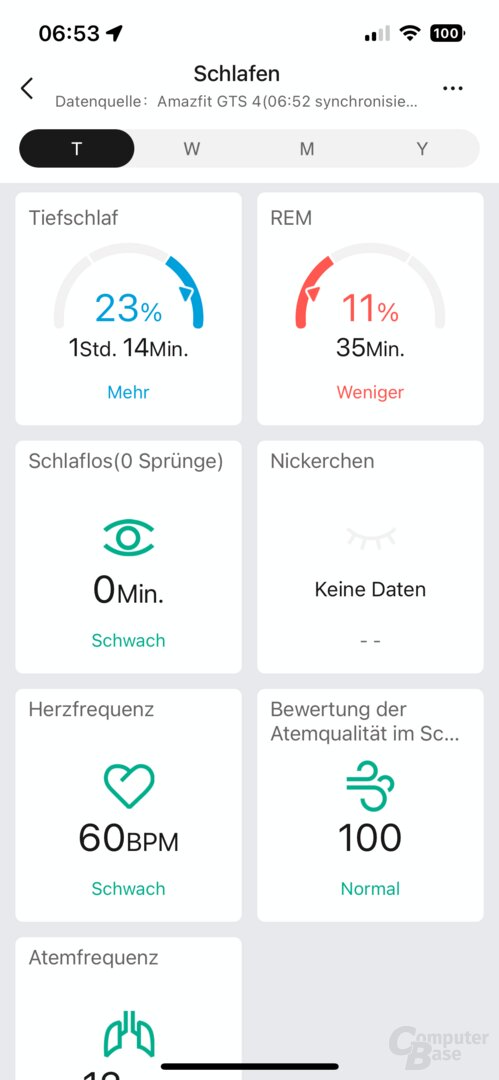

Sleep tracking with the GTS 4
Sensors and vital values
Heart rate and blood oxygen measurement
The heart rate measurements are carried out several times with no, light and heavy loads and compared with an Apple Watch Series 8 and Series 6 and a Polar chest strap (reference). The differences are small in all scenarios, including medium and high heart rates.
The Measurement of blood oxygen saturation can be triggered manually at any time on the GTS 4, alternatively it takes place automatically in the background. A manual measurement takes 30 seconds, which is twice as long as with an Apple Watch, which values are compared here.
In the test, the SpO2 measurement provided credible readings that were also consistent with the values measured by the Apple Watch Series 6. There is therefore no reason to question them.
All in all, it can be said that both measured values are good indicators and Amazfit has actually improved here.
With the steps, the GTS 4 is often wrong
But with the steps, the Amazfit GTS 4 shows a very ambivalent behavior. A total of exactly 1,000 steps was walked three times, with the GTS 4 counting 911, 1,178 and 1,011 steps. The measurement was sometimes almost 10 percent too low, sometimes accurate and then again almost 20 percent above the actual value. The behavior could not be explained. An attempt was made to measure the same walking movements.
Conclusion
Hardware hui, software ugh? It's not that easy with the Amazfit GTS 4 again. It is true that the hardware is convincing and Amazfit also has potential in terms of software. Above all, it is the lack of support from third-party providers that puts the smartwatch in a difficult position compared to Wear OS and watchOS. From the point of view of the third-party developer, however, it is only understandable not to adapt to a single manufacturer and make special adjustments, even if you can cover almost the entire smartwatch market. In this respect, the Amazfit GTS 4 is interesting for all those who expect from their smartwatch what it can do ex works and accept limitations, since the smartwatch is primarily used for the time, tracking of vital data and the extension of notifications from the smartphone is used. For many users, this is actually the main application scenario of a smartwatch.
-
 Amazfit GTS 4
Amazfit GTS 4
Image 1 of 6
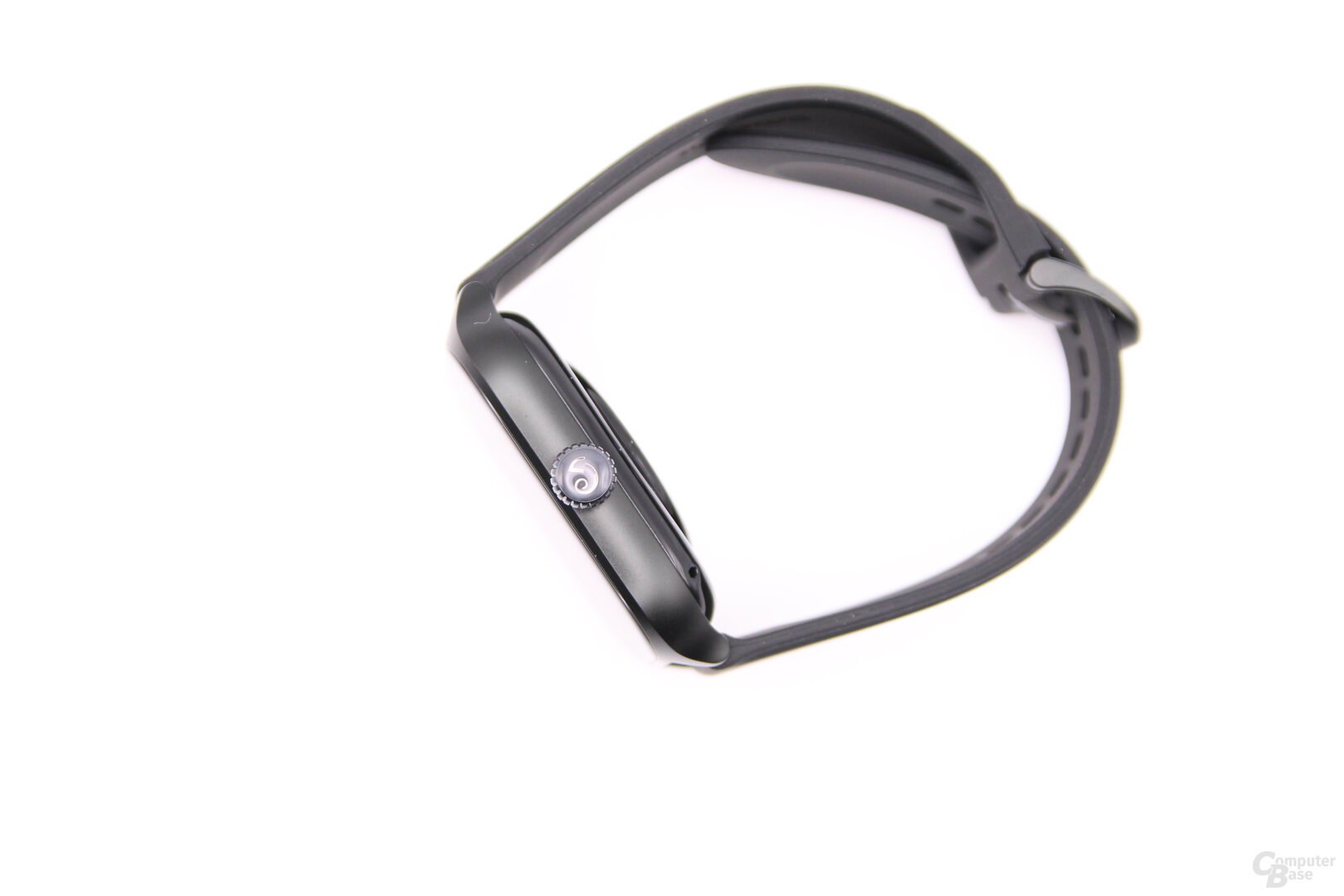
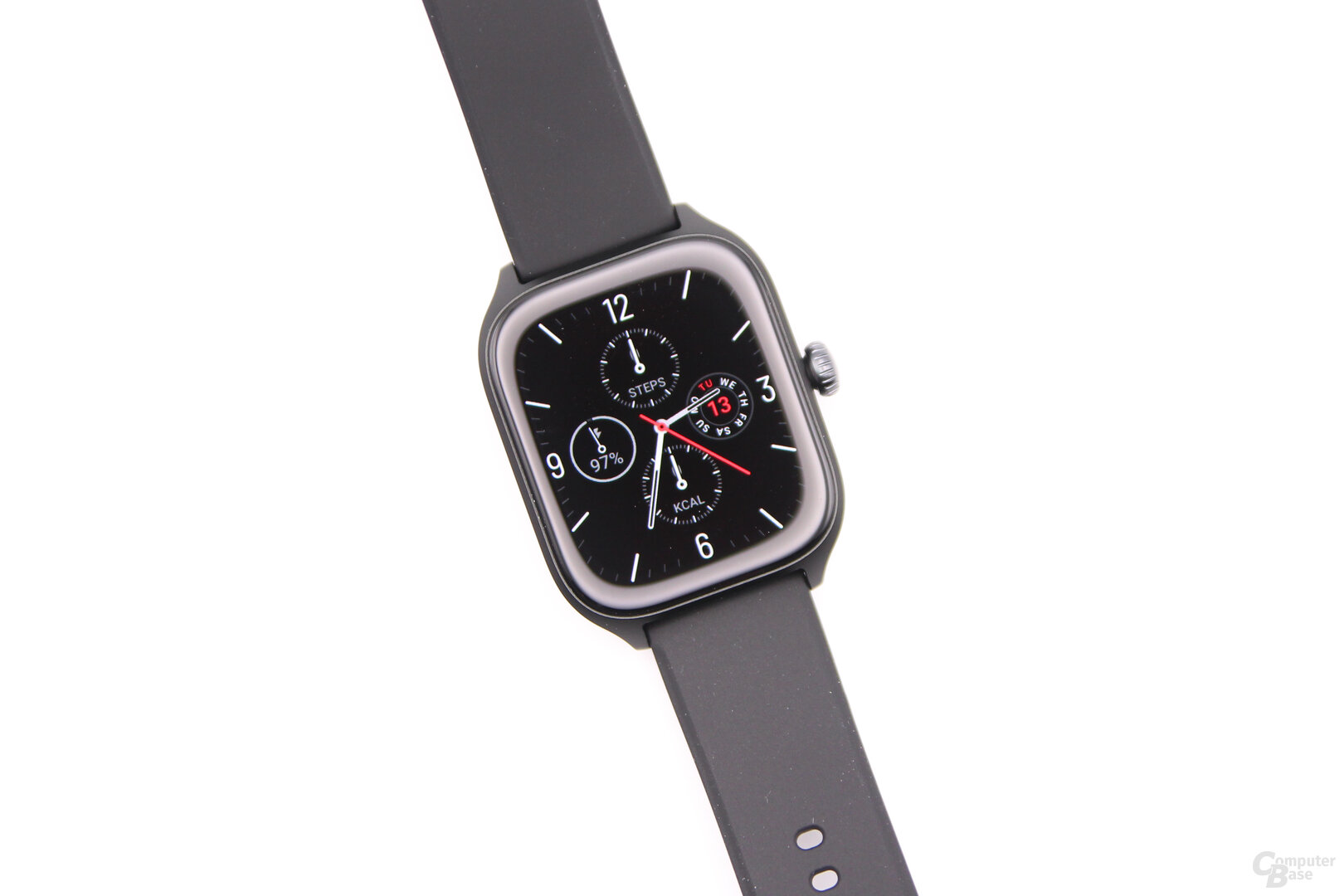
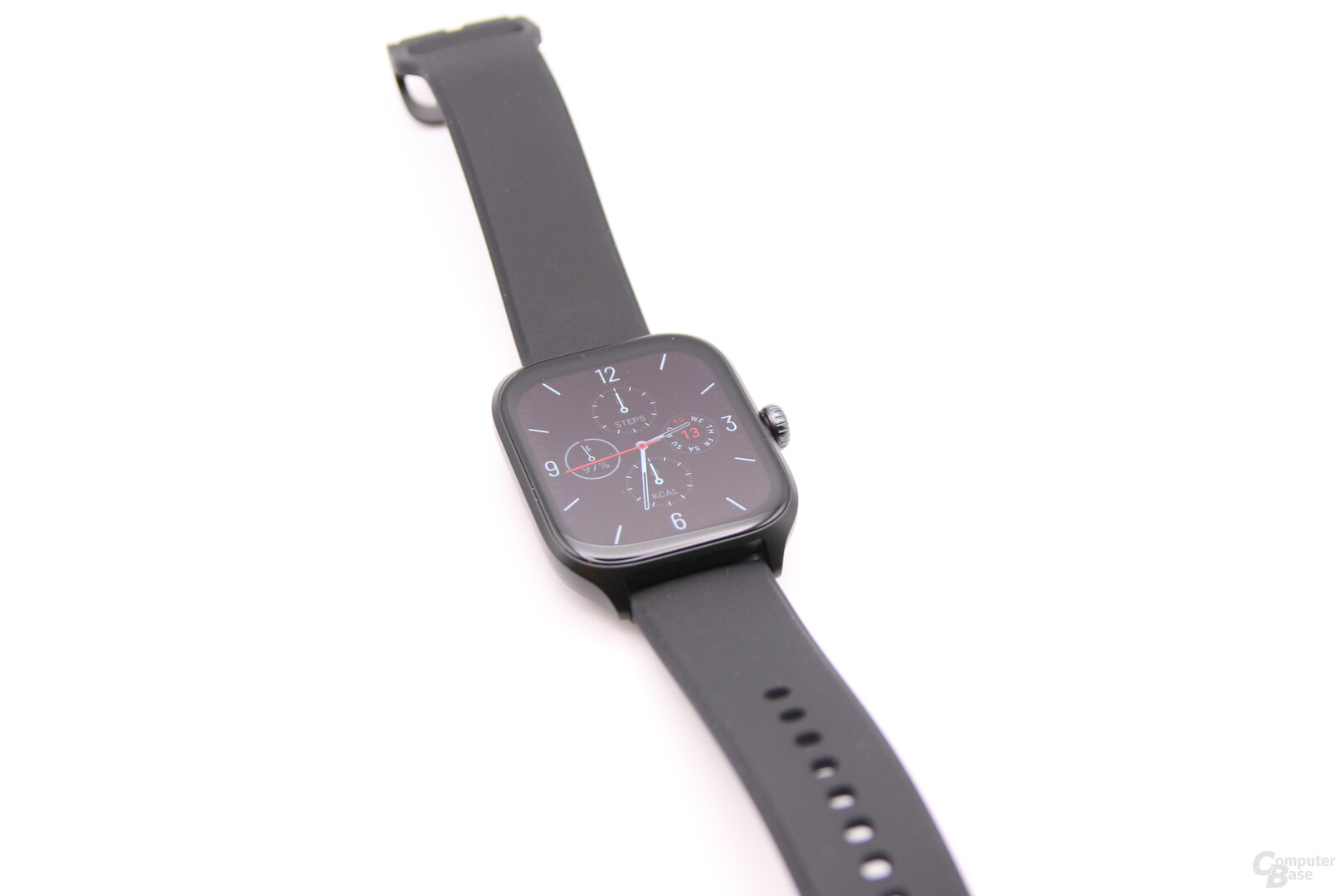 .jpg”
.jpg” 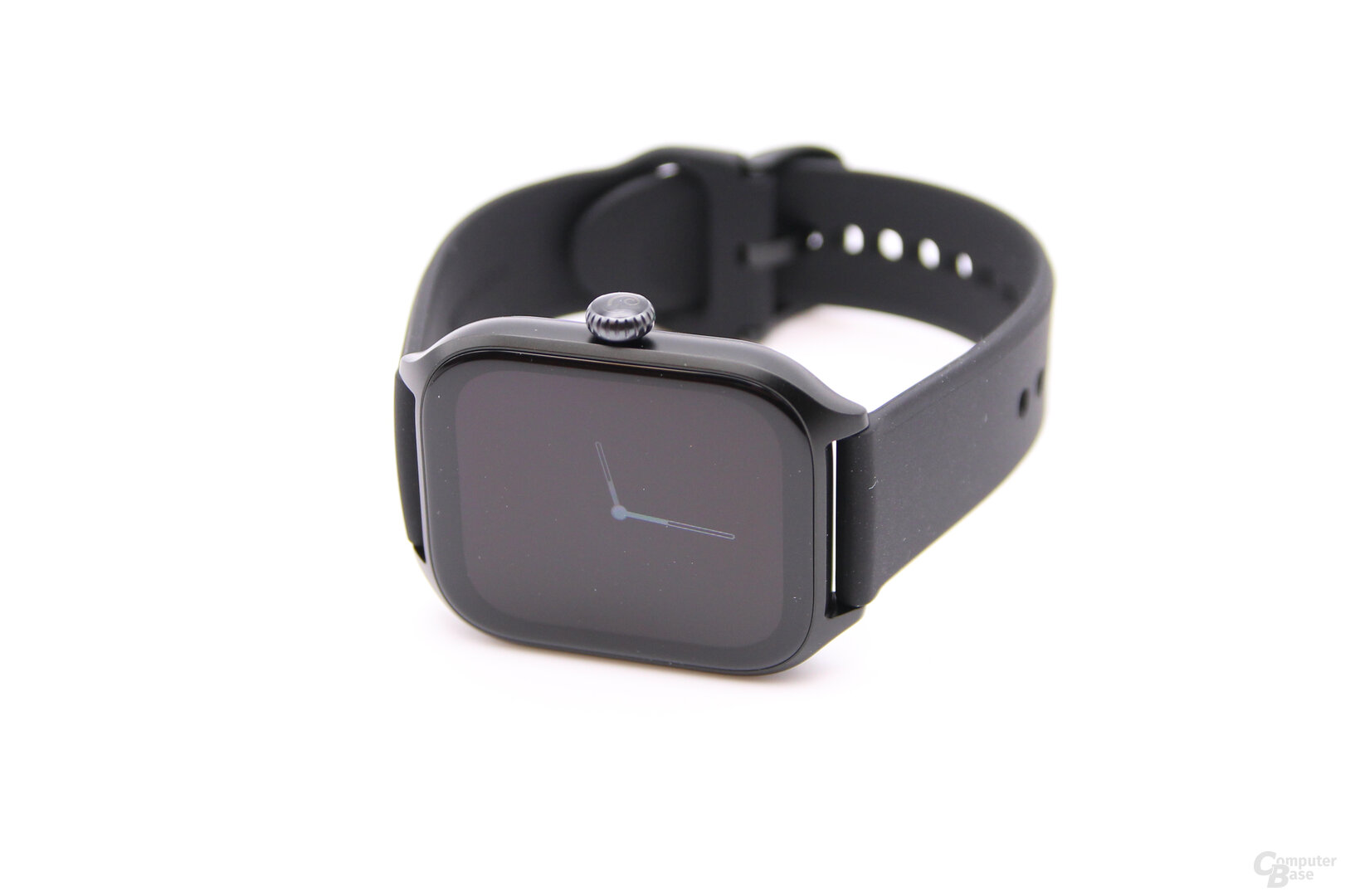
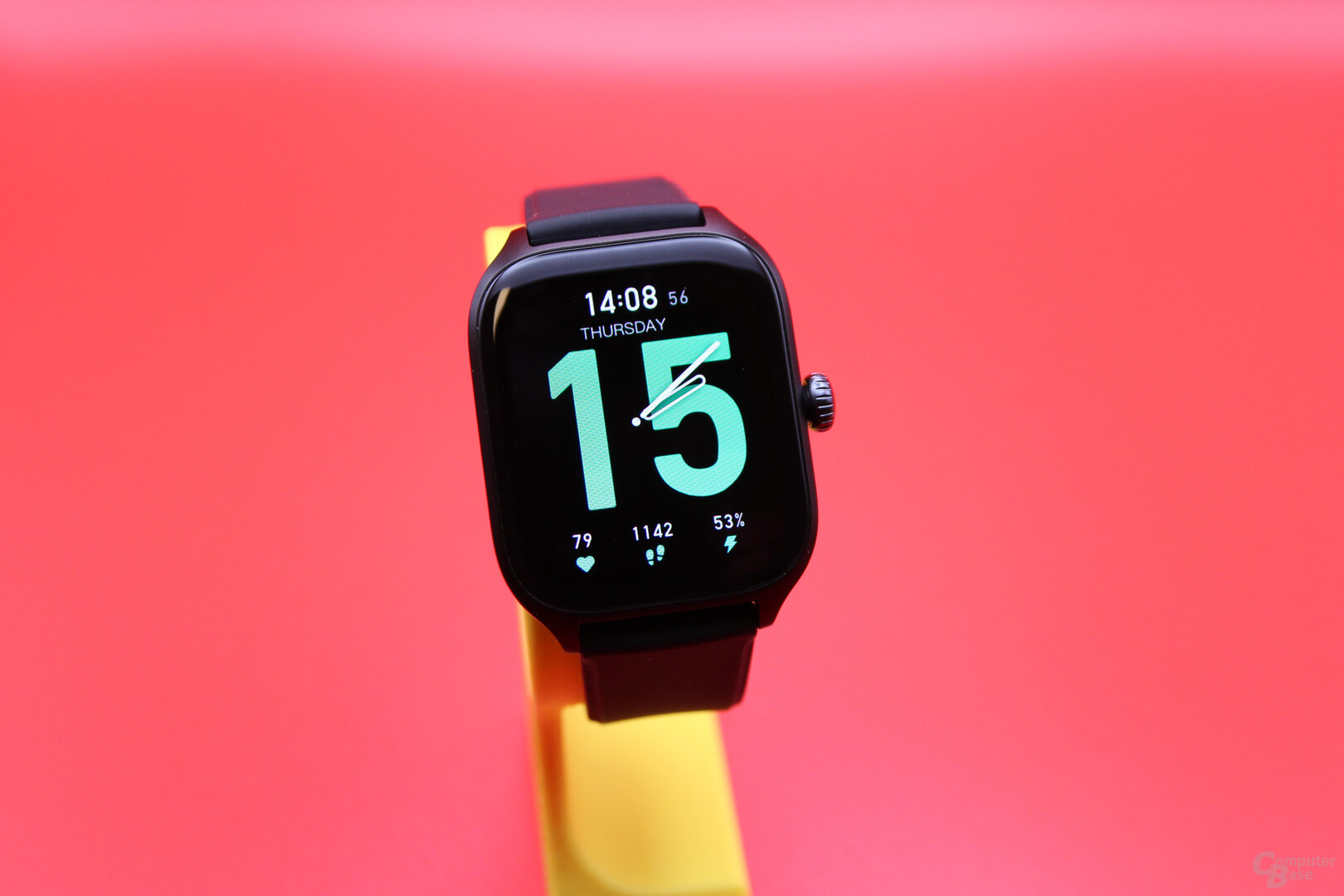
Amazfit GTS 4
The processing, the AMOLED display, the speed, the options and above all the battery life compared to an Apple Watch, but also a Samsung Galaxy Watch 5 (test) and Pixel Watch (test) are convincing. Another plus is that the strap can easily be swapped out for any 20mm strap. With the Samsung Galaxy Watch 5, which recently impressed in the test, the Amazfit GTS 4 also has a competitor that is hardly more expensive, is even more comfortable to wear and, with Wear OS, has broad support from third-party developers. If the GTS 4 costs around 200 euros at Amazfit and Amazon*, the small Galaxy Watch 5 is also available in stores for 230 euros, but it also offers more with the temperature sensor, body composition and blood pressure measurement as well as the sapphire glass – all functions but only with a Galaxy smartphone. With the broad software support, the Samsung Galaxy Watch 5 is currently the better choice if you want it to be a well-rounded smartwatch.
Amazfit GTS 4 Smartwatches product group, 10/14/2022
- < li class="productbox__aspects-li productbox__aspects-li--positive">Good battery life
- Excellent display
- High wearing comfort
- Very good processing quality
- Exact vital data (except steps)
- SpO2 measurement
- Replaceable wristband
- Telephony and music via the smartwatch
- Step counting sometimes differs significantly
- Hardly any app support
- Smartphone app sometimes confusing
- No ECG function
ComputerBase was loaned the GTS 4 from Amazfit for testing. The manufacturer did not influence the test report and there was no obligation to publish it. There was no NDA.
(*) Links marked with an asterisk are affiliate links. In the case of an order via such a link, ComputerBase participates in the sales revenue without increasing the price for the customer.
This article was interesting, helpful or both? The editors are happy about any support from ComputerBase Pro and disabled ad blockers. More about ads on ComputerBase.